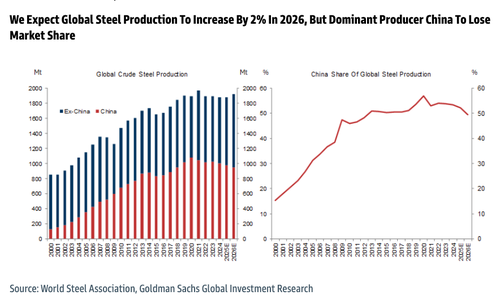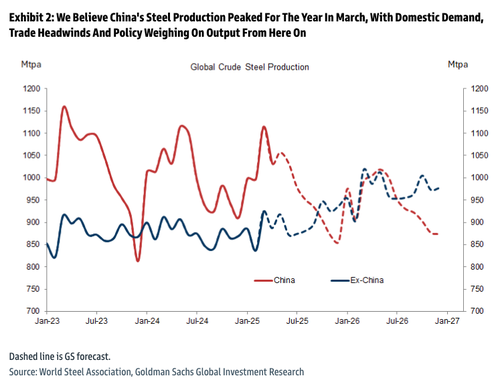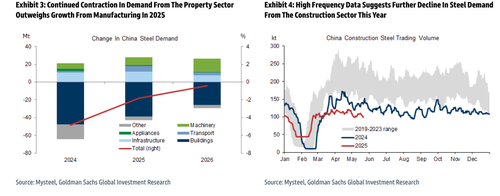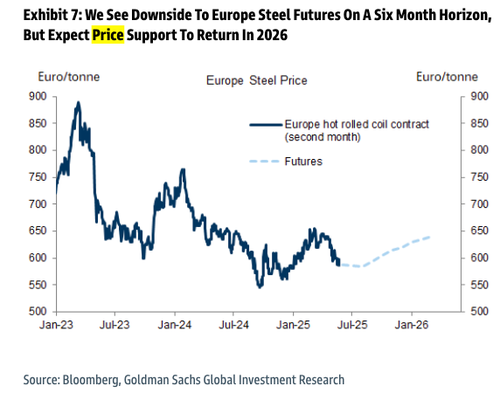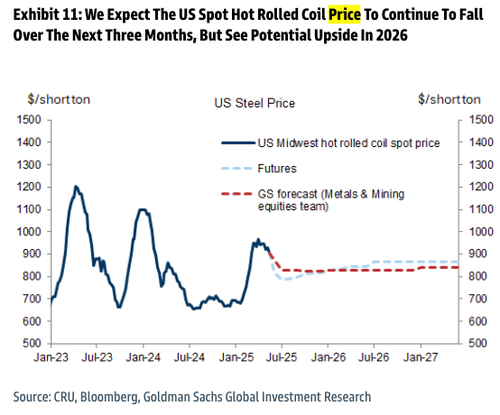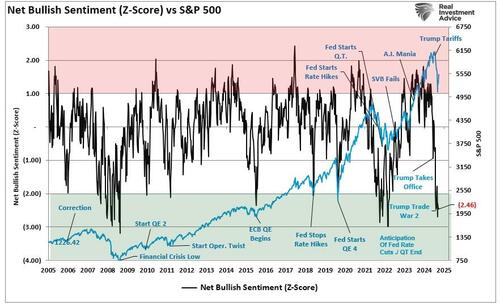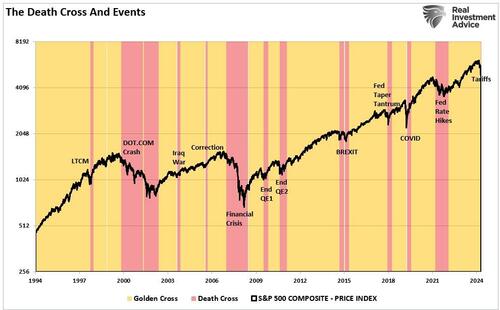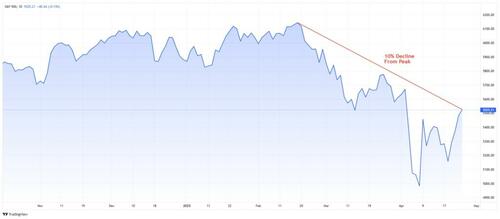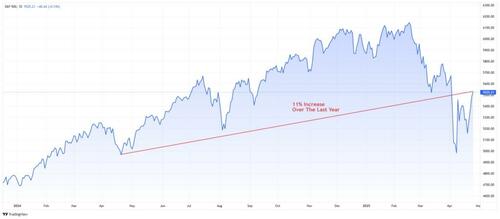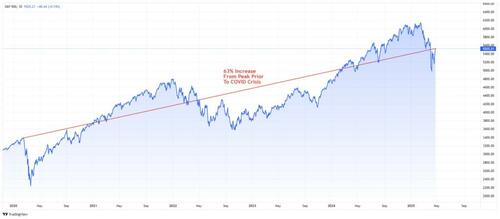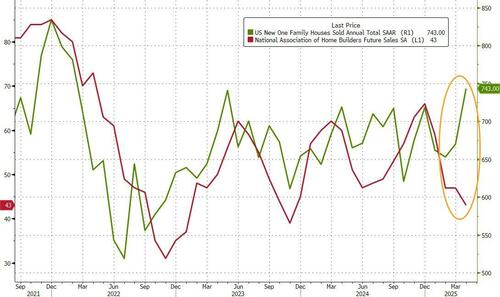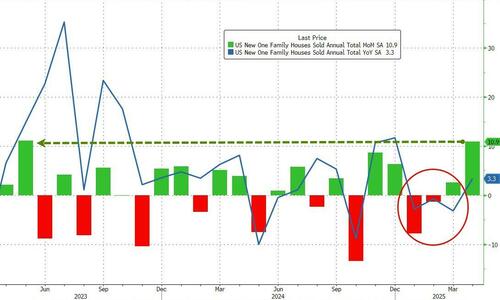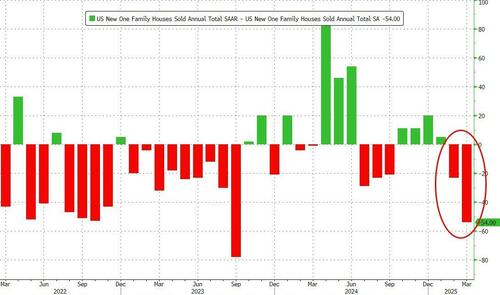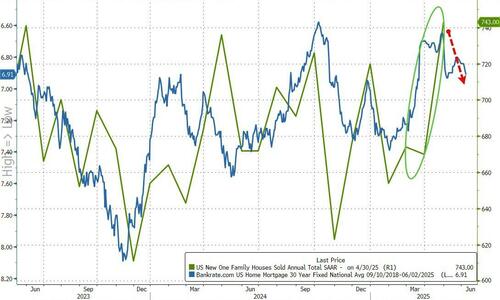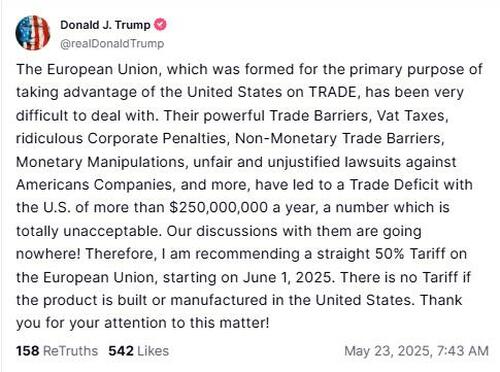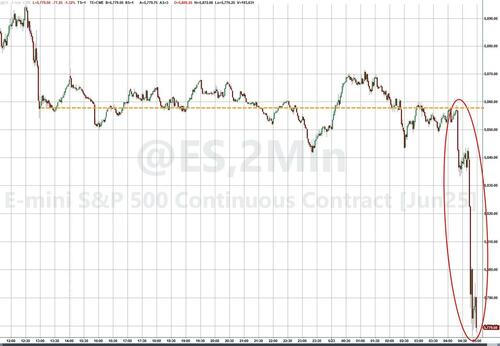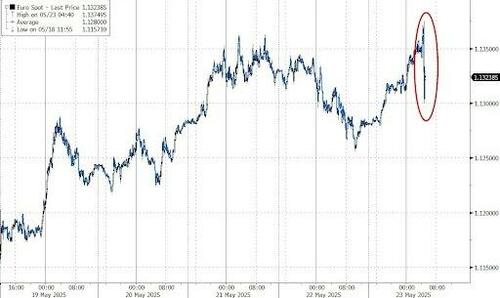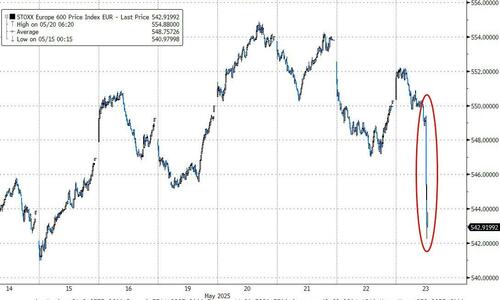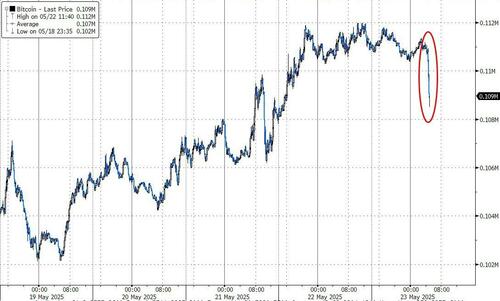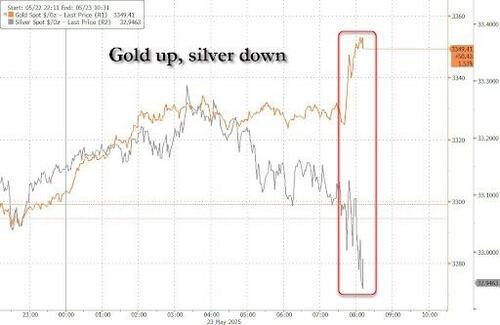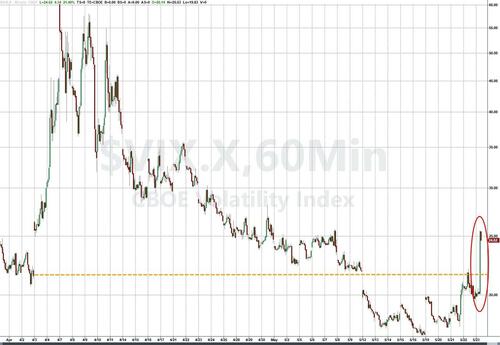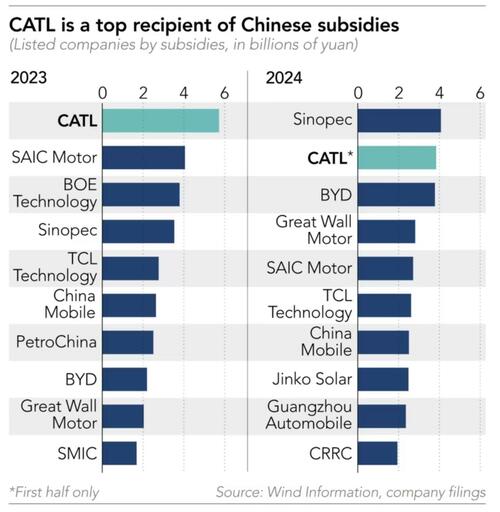Assuredly, the word of truth can be painful and uncomfortable. But it is the way to holiness, to peace, and to inner freedom. A pastoral approach which truly wants to help the people concerned must always be grounded in the truth. In the end, only the truth can be pastoral.
Distinction Matter - Subscribed Feeds
-
Site: Rorate CaeliCharlotte is a vast diocese in one of the fastest growing regions in America: 5.5 million people and over half a million Catholics. For all these, one chapel in an isolated area in an unnamed building in a country highway.They really think we're idiots.The dishonorable bishop's letter (dated from today, Friday, May 23) below:(Click for larger view)New Catholichttp://www.blogger.com/profile/04118576661605931910noreply@blogger.com
-
Site: Zero HedgeWhy Tether Refuses To Comply With MiCATyler Durden Fri, 05/23/2025 - 11:45
Authored by Bradley Peak via CoinTelegraph.com,
Is Tether MiCA compliant?
The EU’s new Markets in Crypto-Assets regulation, better known as MiCA, is the first major attempt by a global economic power to create clear, region-wide rules for the crypto space, and stablecoins are a big focus.
MiCA mandates best practices. If a stablecoin is going to be traded in the EU, its issuer has to follow some stringent rules:
1. You need a license
To issue a stablecoin in Europe, you must become a fully authorized electronic money institution (EMI). That’s the same kind of license traditional fintechs need to offer e-wallets or prepaid cards. It’s not cheap and it’s not quick.
2. Most of your reserves have to sit in European banks
This is one of the most controversial parts of MiCA. If you issue a “significant” stablecoin — and Tether’s USDT certainly qualifies — at least 60% of your reserves must be held in EU-based banks. The logic is to keep the financial system safe.
3. Full transparency is non-negotiable
MiCA requires detailed, regular disclosures. Issuers have to publish a white paper and provide updates on their reserves, audits and operational changes. This level of reporting is new territory for some stablecoins, especially those that have historically avoided public scrutiny.
4. Non-compliant coins are getting delisted
If a token doesn’t comply, it won’t be tradable on regulated EU platforms. Binance, for example, has delisted USDT trading pairs for users in the European Economic Area (EEA). Other exchanges are following suit.
The European Securities and Markets Authority (ESMA) clarified that people in Europe can still hold or transfer USDT, but it can’t be offered to the public or listed on official venues.
In other words, you might still have USDT in your wallet, but good luck trying to swap it on a regulated platform.
Key reasons why Tether rejects MiCA regulations
Tether is unique in that it has explained why it wants nothing to do with MiCA regulations. The company’s leadership, especially CEO Paolo Ardoino, has been pretty vocal about what they see as serious flaws in the regulation, from financial risks to privacy concerns to the bigger picture of who stablecoins are really for.
1. The banking rule could backfire
One of MiCA’s most talked-about rules says that “significant” stablecoins — like Tether’s USDt — must keep at least 60% of their reserves in European banks. The idea is to make stablecoins safer and more transparent. But Ardoino sees it differently.
He’s warned that this could create new problems, forcing stablecoin issuers to rely so heavily on traditional banks could make the whole system more fragile.
After all, if there’s a wave of redemptions and those banks don’t have enough liquidity to keep up, we’d witness a struggling bank and a stablecoin crisis simultaneously.
Instead, Tether prefers to keep most of its reserves in US Treasurys, assets it says are liquid, low-risk and much easier to redeem quickly if needed.
2. They don’t trust the digital euro
Tether also has a broader issue with the direction Europe is heading, especially regarding a digital euro. Ardoino has openly criticized it, raising alarms about privacy.
He has argued that a centrally controlled digital currency could be used to track how people spend their money, and even control or restrict transactions if someone falls out of favor with the system.
Privacy advocates have echoed similar concerns. While the European Central Bank insists that privacy is a top priority (with features like offline payments), Tether isn’t convinced. In their eyes, putting that much financial power in the hands of one institution is asking for trouble.
3. Tether’s users aren’t in Brussels. They’re in Brazil, Turkey and Nigeria
At the heart of it, Tether sees itself as a lifeline for people in countries dealing with inflation, unstable banking systems and limited access to dollars.
These are places like Turkey, Argentina and Nigeria, where USDT is often more useful than the local currency.
MiCA, with all its licensing hoops and reserve mandates, would require Tether to shift focus and invest heavily in meeting EU-specific standards. That’s something the company says it’s not willing to do, not at the expense of the markets it sees as most in need of financial tools like USDT.
Did you know? Turkey ranks among the top countries for cryptocurrency adoption, with 16% of its population engaged in crypto activities. This high adoption rate is largely driven by the devaluation of the Turkish lira and economic instability, prompting citizens to seek alternatives like stablecoins to preserve their purchasing power.
What happens when Tether doesn’t comply with MiCA
Tether’s decision to skip MiCA didn’t exactly fly under the radar. It’s already having real consequences, especially for exchanges and users in Europe.
1. Exchanges are dropping USDT
Big names like Binance and Kraken didn’t wait around. To stay on the right side of EU regulators, they’ve already delisted USDT trading pairs for users in the European Economic Area. Binance had removed them by the end of March 2025. Kraken followed close behind, removing not just USDT but also other non-compliant stablecoins like EURT and PayPal’s PYUSD.
2. Users are left with fewer options
If you’re in Europe and holding USDT, you’re not totally out of luck; you can still withdraw or swap it on certain platforms. But you won’t be trading it on major exchanges anymore. That’s already pushing users toward alternatives like USDC and EURC, which are fully MiCA-compliant and widely supported.
Even major crypto payment processors are pulling support, leaving users with fewer options for spending their crypto directly.
3. A hit to liquidity? Probably.
Pulling USDT from European exchanges could make the markets a bit shakier. Less liquidity, wider spreads and more volatility during big price moves are all on the table. Some traders will adjust quickly. Others? Not so much.
Did you know? Tether (USDT) is the most traded cryptocurrency globally, surpassing even Bitcoin in daily volume. In 2024, it facilitated over $20.6 trillion in transactions and boasts a user base exceeding 400 million worldwide.
Tether vs MiCA regulation
Tether may be out of sync with the EU, but it’s far from retreating. If anything, the company is doubling down elsewhere, looking for friendlier ground and broader horizons.
Firstly, Tether’s picked El Salvador as its new base, a country that has fully embraced crypto. After getting a digital asset service provider license, the company is setting up a real headquarters there. Ardoino and other top execs are making the move too.
Moreover, after banking over $5 billion in profits in early 2024, Tether is putting its capital to work:
-
AI: Through its venture arm, Tether Evo, the company has picked up stakes in firms like Northern Data Group and Blackrock Neurotech. Tether has also launched Tether AI, an open-source, decentralized AI platform designed to operate on any device without centralized servers or API keys. The goal is to use AI to boost operations and maybe build some new tools along the way.
-
Infrastructure and AgTech: Tether invested in Adecoagro, a company focused on sustainable farming and renewable energy. It’s a surprising move, but it fits Tether’s bigger strategy of backing real-world, resilient systems.
-
Media and beyond: There are also signs Tether wants a footprint in content and communications, signaling it’s thinking far beyond crypto alone.
Tether’s MiCA exit highlights crypto’s global regulatory chaos
Tether walking away from MiCA is a snapshot of a much bigger issue in crypto: How hard it is to build a business in a world where every jurisdiction plays by its own rulebook.
The classic game of regulatory arbitrage
This isn’t Tether’s first rodeo when it comes to navigating regulations. Like many crypto companies, they’ve mastered the art of regulatory arbitrage, finding the friendliest jurisdiction and setting up shop there.
Europe brings in strict rules? Fine, Tether sets up in El Salvador, where crypto is welcomed with open arms.
However, it does raise questions. If big players can simply move jurisdictions to dodge regulations, how effective are those rules in the first place? And does that leave retail users protected or just further confused?
A crypto world that’s all over the map
The bigger issue is that the global regulatory landscape is incredibly fragmented. Europe wants full compliance, transparency and reserve mandates. The US is still sending mixed signals. Asia is split; Hong Kong is pro-crypto, while China stays cold.
Hong Kong has also passed the Stablecoin Bill to license fiat-backed issuers and boost its Web3 ambitions. Meanwhile, Latin America is embracing crypto as a tool for financial access.
For companies, it’s a mess. You can’t build for one global market; you must constantly adapt, restructure or pull out entirely. For users, it creates massive gaps in access. A coin available in one country might be inaccessible in another just because of local policy.
As a final thought: Tether’s resistance to MiCA seems to be more than just a protest against red tape.
It’s making a bet that crypto’s future will be shaped outside Brussels, not inside it.
-
-
Site: Zero HedgeWhy Tether Refuses To Comply With MiCATyler Durden Fri, 05/23/2025 - 11:45
Authored by Bradley Peak via CoinTelegraph.com,
Is Tether MiCA compliant?
The EU’s new Markets in Crypto-Assets regulation, better known as MiCA, is the first major attempt by a global economic power to create clear, region-wide rules for the crypto space, and stablecoins are a big focus.
MiCA mandates best practices. If a stablecoin is going to be traded in the EU, its issuer has to follow some stringent rules:
1. You need a license
To issue a stablecoin in Europe, you must become a fully authorized electronic money institution (EMI). That’s the same kind of license traditional fintechs need to offer e-wallets or prepaid cards. It’s not cheap and it’s not quick.
2. Most of your reserves have to sit in European banks
This is one of the most controversial parts of MiCA. If you issue a “significant” stablecoin — and Tether’s USDT certainly qualifies — at least 60% of your reserves must be held in EU-based banks. The logic is to keep the financial system safe.
3. Full transparency is non-negotiable
MiCA requires detailed, regular disclosures. Issuers have to publish a white paper and provide updates on their reserves, audits and operational changes. This level of reporting is new territory for some stablecoins, especially those that have historically avoided public scrutiny.
4. Non-compliant coins are getting delisted
If a token doesn’t comply, it won’t be tradable on regulated EU platforms. Binance, for example, has delisted USDT trading pairs for users in the European Economic Area (EEA). Other exchanges are following suit.
The European Securities and Markets Authority (ESMA) clarified that people in Europe can still hold or transfer USDT, but it can’t be offered to the public or listed on official venues.
In other words, you might still have USDT in your wallet, but good luck trying to swap it on a regulated platform.
Key reasons why Tether rejects MiCA regulations
Tether is unique in that it has explained why it wants nothing to do with MiCA regulations. The company’s leadership, especially CEO Paolo Ardoino, has been pretty vocal about what they see as serious flaws in the regulation, from financial risks to privacy concerns to the bigger picture of who stablecoins are really for.
1. The banking rule could backfire
One of MiCA’s most talked-about rules says that “significant” stablecoins — like Tether’s USDt — must keep at least 60% of their reserves in European banks. The idea is to make stablecoins safer and more transparent. But Ardoino sees it differently.
He’s warned that this could create new problems, forcing stablecoin issuers to rely so heavily on traditional banks could make the whole system more fragile.
After all, if there’s a wave of redemptions and those banks don’t have enough liquidity to keep up, we’d witness a struggling bank and a stablecoin crisis simultaneously.
Instead, Tether prefers to keep most of its reserves in US Treasurys, assets it says are liquid, low-risk and much easier to redeem quickly if needed.
2. They don’t trust the digital euro
Tether also has a broader issue with the direction Europe is heading, especially regarding a digital euro. Ardoino has openly criticized it, raising alarms about privacy.
He has argued that a centrally controlled digital currency could be used to track how people spend their money, and even control or restrict transactions if someone falls out of favor with the system.
Privacy advocates have echoed similar concerns. While the European Central Bank insists that privacy is a top priority (with features like offline payments), Tether isn’t convinced. In their eyes, putting that much financial power in the hands of one institution is asking for trouble.
3. Tether’s users aren’t in Brussels. They’re in Brazil, Turkey and Nigeria
At the heart of it, Tether sees itself as a lifeline for people in countries dealing with inflation, unstable banking systems and limited access to dollars.
These are places like Turkey, Argentina and Nigeria, where USDT is often more useful than the local currency.
MiCA, with all its licensing hoops and reserve mandates, would require Tether to shift focus and invest heavily in meeting EU-specific standards. That’s something the company says it’s not willing to do, not at the expense of the markets it sees as most in need of financial tools like USDT.
Did you know? Turkey ranks among the top countries for cryptocurrency adoption, with 16% of its population engaged in crypto activities. This high adoption rate is largely driven by the devaluation of the Turkish lira and economic instability, prompting citizens to seek alternatives like stablecoins to preserve their purchasing power.
What happens when Tether doesn’t comply with MiCA
Tether’s decision to skip MiCA didn’t exactly fly under the radar. It’s already having real consequences, especially for exchanges and users in Europe.
1. Exchanges are dropping USDT
Big names like Binance and Kraken didn’t wait around. To stay on the right side of EU regulators, they’ve already delisted USDT trading pairs for users in the European Economic Area. Binance had removed them by the end of March 2025. Kraken followed close behind, removing not just USDT but also other non-compliant stablecoins like EURT and PayPal’s PYUSD.
2. Users are left with fewer options
If you’re in Europe and holding USDT, you’re not totally out of luck; you can still withdraw or swap it on certain platforms. But you won’t be trading it on major exchanges anymore. That’s already pushing users toward alternatives like USDC and EURC, which are fully MiCA-compliant and widely supported.
Even major crypto payment processors are pulling support, leaving users with fewer options for spending their crypto directly.
3. A hit to liquidity? Probably.
Pulling USDT from European exchanges could make the markets a bit shakier. Less liquidity, wider spreads and more volatility during big price moves are all on the table. Some traders will adjust quickly. Others? Not so much.
Did you know? Tether (USDT) is the most traded cryptocurrency globally, surpassing even Bitcoin in daily volume. In 2024, it facilitated over $20.6 trillion in transactions and boasts a user base exceeding 400 million worldwide.
Tether vs MiCA regulation
Tether may be out of sync with the EU, but it’s far from retreating. If anything, the company is doubling down elsewhere, looking for friendlier ground and broader horizons.
Firstly, Tether’s picked El Salvador as its new base, a country that has fully embraced crypto. After getting a digital asset service provider license, the company is setting up a real headquarters there. Ardoino and other top execs are making the move too.
Moreover, after banking over $5 billion in profits in early 2024, Tether is putting its capital to work:
-
AI: Through its venture arm, Tether Evo, the company has picked up stakes in firms like Northern Data Group and Blackrock Neurotech. Tether has also launched Tether AI, an open-source, decentralized AI platform designed to operate on any device without centralized servers or API keys. The goal is to use AI to boost operations and maybe build some new tools along the way.
-
Infrastructure and AgTech: Tether invested in Adecoagro, a company focused on sustainable farming and renewable energy. It’s a surprising move, but it fits Tether’s bigger strategy of backing real-world, resilient systems.
-
Media and beyond: There are also signs Tether wants a footprint in content and communications, signaling it’s thinking far beyond crypto alone.
Tether’s MiCA exit highlights crypto’s global regulatory chaos
Tether walking away from MiCA is a snapshot of a much bigger issue in crypto: How hard it is to build a business in a world where every jurisdiction plays by its own rulebook.
The classic game of regulatory arbitrage
This isn’t Tether’s first rodeo when it comes to navigating regulations. Like many crypto companies, they’ve mastered the art of regulatory arbitrage, finding the friendliest jurisdiction and setting up shop there.
Europe brings in strict rules? Fine, Tether sets up in El Salvador, where crypto is welcomed with open arms.
However, it does raise questions. If big players can simply move jurisdictions to dodge regulations, how effective are those rules in the first place? And does that leave retail users protected or just further confused?
A crypto world that’s all over the map
The bigger issue is that the global regulatory landscape is incredibly fragmented. Europe wants full compliance, transparency and reserve mandates. The US is still sending mixed signals. Asia is split; Hong Kong is pro-crypto, while China stays cold.
Hong Kong has also passed the Stablecoin Bill to license fiat-backed issuers and boost its Web3 ambitions. Meanwhile, Latin America is embracing crypto as a tool for financial access.
For companies, it’s a mess. You can’t build for one global market; you must constantly adapt, restructure or pull out entirely. For users, it creates massive gaps in access. A coin available in one country might be inaccessible in another just because of local policy.
As a final thought: Tether’s resistance to MiCA seems to be more than just a protest against red tape.
It’s making a bet that crypto’s future will be shaped outside Brussels, not inside it.
-
-
Site: Zero HedgeIran Tells US "Time To Decide" During 5th Round Of Nuclear Talks In RomeTyler Durden Fri, 05/23/2025 - 11:30
Iranian Foreign Minister Abbas Araghchi and Trump's Middle East envoy Steve Witkoff are leading a fifth round of nuclear talks which kicked off Friday in Rome, through Omani mediators.
FM Araghchi said on X just ahead of the talks starting that it is "time to decide" - in post late Thursday. "Zero nuclear weapons = we DO have a deal. Zero enrichment = we do NOT have a deal," the Iranian top diplomat stated.
The US administration has of late been pushing a demand of no enrichment, but Tehran has rebuked this as a non-starter, saying it sees the issue as a right of national sovereignty. Araghchi had also written, "Figuring out the path to a deal is not rocket science."
 Italy’s Foreign Minister Antonio Tajani (L) talks to Iranian Foreign Minister Abbas Araghchi, via Reuters.
Italy’s Foreign Minister Antonio Tajani (L) talks to Iranian Foreign Minister Abbas Araghchi, via Reuters.
Iranian Foreign Ministry spokesman Esmaeil Baghaei has said from Rome, "This round of talks is especially sensitive… we need to see what issues will be raised by the other party … and based on that, we will proceed with our positions."
This strongly suggests the Iranian side could be ready to quit the talks if Washington keeps insisting on its red line. Secretary of State Marco Rubio earlier this week admitted that getting Tehran to where the US wants it to be on the issue "will not be easy".
However, on Thursday White House press secretary Karoline Leavitt was more optimistic, and described that Trump believes negotiations with Iran are "moving in the right direction."
CNN reviews of where things stand, and what Iran is open to conceding:
Speaking Thursday, Araghchi said Iran was open to enhanced monitoring by international inspectors but would not relinquish its right to pursue nuclear energy, including uranium enrichment. Washington is offering to wind back crippling economic sanctions on Iran in exchange for de-nuclearization.
The US had previously sent mixed signals about whether Iran would be allowed to enrich uranium, but in recent weeks it has hardened its stance, insisting that no enrichment will be permitted.
On Tuesday, Iran's Supreme Leader, Ayatollah Ali Khamenei, called the US demands that Iranian enrichment be taken down to zero "excessive and outrageous," according to state media. He further expressed doubts that current nuclear talks with the Trump administration will actually lead anywhere.
"I don't think nuclear talks with the U.S. will bring results. I don't know what will happen," Khamenei said. He further called on Washington to cease making over-the-top demands in nuclear talks.
Insisting on “zero enrichment” during talks with Iran is a recipe for failure.
— Quincy Institute (@QuincyInst) May 22, 2025
But that’s EXACTLY why hawks like John Bolton & Mike Pompeo have embraced this demand: because it will lead to war.
The American people are sick of endless wars. So let’s hope Trump listens to them.Tehran officials have of late also called the Trump administration's stance "contradictory" - after President Trump attempted overtures, sprinkled with direct threats, in his Iran-related rhetoric while in the Gulf last week.
It should be very clear by the weekend whether the Rome talks lead to any breakthrough. It could all depend on if the American delegation actually softens its stance on zero enrichment.
The fifth round of U.S.-Iran nuclear talks ends after three hours, source with knowledge says
— Barak Ravid (@BarakRavid) May 23, 2025 -
Site: Zero HedgeWoman Who Spat On Former US Attorney Charged With AssaultTyler Durden Fri, 05/23/2025 - 11:15
Authored by Stacy Robinson via The Epoch Times,
The U.S. Attorney’s Office announced on May 22 that it had arrested a woman for assaulting then-interim U.S. Attorney Ed Martin.
Emily Gabriella Sommer, 32, allegedly spat on Martin while he was conducting a television interview. The incident was caught on camera.
According to a statement from the District U.S. Attorney’s Office, Sommer approached Martin while he was standing outside its headquarters in Washington, cursing at him.
“Martin turned to face Sommer. Sommer then said, ‘Are you Ed Martin? You are. Ed Martin.’ Sommer lunged at Martin and spit on his shoulder,” the statement said.
Sommer cursed at Martin again as she turned and walked away, shouting,
“You are a disgusting man. ... My name is Emily Gabriella Sommer, and you are served.”
Following the incident, Sommer allegedly replied to numerous posts on Martin’s X account, taking responsibility for the incident. According to court documents, she posted the same message in each reply.
“ED, that was me that spit in your face today ... that absolutely definitely spit in your face on camera. Hi, hello,” the posts read.
Martin, the former chair of the Missouri Republican Party, was appointed as interim U.S. attorney for the District of Columbia earlier this year by President Donald Trump.
Trump nominated him for the position on a permanent basis, but had to rescind the offer after some GOP senators refused to support him.
Sen. Thom Tillis (R-N.C.) told reporters on May 6 that he would not vote to confirm Martin because they disagreed on the treatment of individuals accused of rioting at the Capitol building on Jan. 6, 2021.
Tills said Martin seemed “like a good man” and that he’d made a good case that some of these individuals had been “over-prosecuted,” but also said there was “friction” on which individuals should be prosecuted.
“If Mr. Martin were being put forth as a U.S. attorney for any district except the district where Jan. 6 happened, the protests happened, I’d probably support him,” Tillis said.
“But not in this district.”
For his part, Martin had a sense of humor about the setback.
He posted on X a picture of himself dressed as pope with the words “Plot twist,” since Trump’s announcement was made on the same day the Vatican was in the process of electing Pope Leo XIV.
On May 13, Martin announced that Trump had appointed him to a dual role in the Department of Justice as “pardon attorney” and director of the Weaponization Working Group, which will investigate government prosecutorial overreach.
-
Site: AsiaNews.itFifty years after the fall of Phnom Penh to Pol Pot and the Khmer Rouge, the book "Beyond the Horizon" is published in Italian. In it a French woman describes the genocide with the eyes of someone who had come to Cambodia for love. The book is her diary of hell, misery, lies and death experienced with her daughters. The story is extremely interesting and credible for a country where a UN tribunal failed to render justice and uncover the truth.
-
Site: Mises InstituteJames Bovard: Today is the 163th anniversary of the battle of Front Royal, Virginia (the town near where I was raised). On May 23, 1862, almost all the Yankee soldiers in Front Royal were captured, killed or wounded.
-
Site: Ron Paul Institute - Featured Articles
American and other Western elites complain ad nauseam, decrying the Iranians’ intransigent, devious, aggressive, and unreliable behavior. They claim Iran will not make or keep an agreement. Never forget, however, that Iran is more than five millennia old with a long history of diplomacy. The Iranians may be difficult, but one of the barriers to an agreement could be the Iranians’ wariness of the United States’ long pattern of broken agreements.
In 1945 the U.S. signed the United Nations charter declaring the importance of protecting the sovereignty of states. Iran was also a signatory of that charter.
But eight years later, in 1953, the CIA and British Intelligence organized Operation Ajax, which overthrew the constitutionally elected Iranian Prime Minister Mohammed Mossadegh and empowered Mohammad Reza Shah Pahlavi, the son of the first Pahlavi shah who was deposed in 1941 by the British and Soviets. The CIA’s actions were in complete violation of Article 2 of the UN Charter. U.S. agencies also armed and trained the Iranian secret police, the Savak, to suppress any opposition, often using the tired old excuse that dissenters were Soviet-inspired or -supported.
American and other Western elites complain ad nauseam, decrying the Iranians’ intransigent, devious, aggressive, and unreliable behavior. They claim Iran will not make or keep an agreement. Never forget, however, that Iran is more than five millennia old with a long history of diplomacy. The Iranians may be difficult, but one of the barriers to an agreement could be the Iranians’ wariness of the United States’ long pattern of broken agreements.
In 1945 the U.S. signed the United Nations charter declaring the importance of protecting the sovereignty of states. Iran was also a signatory of that charter.
But eight years later, in 1953, the CIA and British Intelligence organized Operation Ajax, which overthrew the constitutionally elected Iranian Prime Minister Mohammed Mossadegh and empowered Mohammad Reza Shah Pahlavi, the son of the first Pahlavi shah who was deposed in 1941 by the British and Soviets. The CIA’s actions were in complete violation of Article 2 of the UN Charter. U.S. agencies also armed and trained the Iranian secret police, the Savak, to suppress any opposition, often using the tired old excuse that dissenters were Soviet-inspired or -supported.
Fair Use Excerpt. Read the whole article here.
-
Site: Ron Paul Institute - Featured Articles
The inexorable decline of the American Empire has arrived at an Imperial Paradox. It must either fight a war and die, or not fight a war and yet still die.
Here are the options:
China
Neither South Korea nor Japan want anything to do with a war against China, leaving only the Philippines dumb enough to play along.
The US apparently pulled another brigade out of South Korea. They’ll pull out more in the future. They know damn well the North Koreans could easily conquer the entire peninsula if they chose to do so.
China and its local seas are a vast ocean away from America, and its capacity to defend its local seas is enormous and growing.
The Pentagon must understand it cannot sustain logistics in a war against China in the western Pacific. It simply cannot be done. Anyone who thinks otherwise must upgrade their proficiency in basic arithmetic.
Iran
In the context of a war against Iran, all the geography is against the US.
Iran is an exceedingly mountainous country that has, over the course of millennia, learned to use those mountains to defend itself against would-be conquerors.
They can field a satisfactorily well-equipped million-man army.
They have learned in the 21st century to burrow deep heavily fortified tunnels into their mountains.
Iran is also much more technologically advanced than most people understand. They have become impressively capable in terms of both offensive and defensive missiles. They pose a far greater challenge than the Yemeni have been over the past year and a half.
Indeed, they pose a “near-peer” challenge against US overseas power projection.
The US Navy could only operate at extreme risk in the southern Red Sea, the Gulf of Aden, the Gulf of Oman, the Strait of Hormuz, and the Persian Gulf.

Every US base in the region is well within range of Iranian missile strikes.
The US Navy very demonstrably cannot secure seaborne logistics into the Persian Gulf. They lack both the sealift ships, and the ability to protect them.
They cannot even open the Bab-el-Mandeb!
Russia
From a geographic and logistical standpoint, the only remotely conceivable war is one in Ukraine against Russia.
The US at least has bases and forces already in place in the UK, Germany, Poland, Romania, Finland, and in Baltic chihuahua fantasy-land — and what has served until now as a reasonably secure logistics pathway into all those places.
Of course, whether or not such a condition persists long in a war scenario is another question altogether.
Because, you see, the Russians are now unquestionably the most formidable and battle-hardened military on the planet — at least in the context of a war fought on their doorstep.
So if you’re an empire that thinks it needs a war to reaffirm at least its short-term relevance and fading glory … well, these are your choices.
Sic transit gloria mundi.
Reprinted with permission from imetatronink.
Subscribe and support here. -
Site: Zero HedgeChina's Two-Decade Global Steel Expansion "Has Now Ended"Tyler Durden Fri, 05/23/2025 - 10:45
In Goldman's latest global steel outlook, analysts Aurelia Waltham, Eoin Dinsmore, and others highlight a key inflection point: China's share of global steel production has declined for the first time in over two decades, reversing a multi-decade expansion period.
"After more than two decades of China increasing its share of global steel production, we believe this structural trend has now come to an end as China's domestic demand continues to falter and barriers to steel exports intensify," Waltham and her team wrote in a note published on Friday morning.
The analysts noted that their global steel supply and demand model forecasted a 3% and 4% year-over-year increase in ex-China steel demand for 2025 and 2026, respectively. As Chinese steel exports are expected to decline, ex-China crude steel production is projected to rise by 3% in 2025 and 8% in 2026.
"While we are bearish on US and European steel prices on the three-to-six month horizon, we expect a re-acceleration in demand growth and lower Chinese steel exports to provide price upside in 2026," Waltham said.
They outlined the biggest risk to their forecast of China losing global market share:
We see the biggest risk to our call that China will start to lose market share of global steel production to the rest of the world over the next two years being indirect[1] Chinese steel exports continuing to climb, pushing down rest of world apparent steel demand. This would likely see China steel demand from the manufacturing sector exceeding our current expectations, preventing a decline in Chinese steel output and apparent domestic demand, while at the same time meaning rest of world steel production growth would fall below end use consumption growth. However, this would be at odds with China's policy to reduce steel output.
Following a 25-year expansion that saw China increase its share of global steel production from approximately 15% in 2000 to about 55% by 2020, analysts now forecast a decline to about 50% by 2026.
China's steel production for 2025 already peaked in March.
Key takeaways about China's declining influence in global steel markets:
-
Peak Reached: China's steel production likely peaked in March 2025 and is expected to decline by 2–3% YoY through 2026.
-
Domestic demand slowdown: A continued decline in construction activity, especially new housing starts (forecasted to drop 24% in 2025), will more than offset gains from manufacturing (e.g., autos and appliances).
-
Export headwinds: Chinese finished and semi-finished steel exports are forecast to drop 33% YoY in 2026, from 12% to under 8% of ex-China steel consumption.
-
Policy risk: If exports or output stay elevated, the Chinese government may impose mandated production cuts (likely via emissions controls) in Q4 2025 to meet policy targets.
China's economy is still a mess. Property sector will continue to weigh on steel demand.
However, the analysts view a rebound in ex-China steel:
-
Ex-China growth: Production outside China is expected to rise 3% in 2025 and 8% in 2026, helped by recovering demand and lower competition from Chinese exports.
-
Regional demand: Demand in the U.S., EU, and India will gradually improve. Apparent demand outside China is forecast to rise 3–4% annually into 2026.
Global Steel Price Outlook:
-
Near-term weakness: U.S. and European prices face further downside in the next 3–6 months due to lackluster demand and high inventories.
-
2026 upside: Prices are forecast to rise in 2026 as Chinese exports fall and global demand picks up, particularly in Asia and the EU. Anti-dumping measures and trade friction will help contain Chinese supply abroad.
European Steel Price Forcast
US Hot Rolled Coil Price Forecast
The long-standing concern over China flooding global markets with steel may finally be easing—a shift that could pave the way for Western producers to ramp up output. We anticipate this trend will be evident in the U.S amid President Trump's 'America First' era.
-
-
Site: Zero HedgeChina's Two-Decade Global Steel Expansion "Has Now Ended"Tyler Durden Fri, 05/23/2025 - 10:45
In Goldman's latest global steel outlook, analysts Aurelia Waltham, Eoin Dinsmore, and others highlight a key inflection point: China's share of global steel production has declined for the first time in over two decades, reversing a multi-decade expansion period.
"After more than two decades of China increasing its share of global steel production, we believe this structural trend has now come to an end as China's domestic demand continues to falter and barriers to steel exports intensify," Waltham and her team wrote in a note published on Friday morning.
The analysts noted that their global steel supply and demand model forecasted a 3% and 4% year-over-year increase in ex-China steel demand for 2025 and 2026, respectively. As Chinese steel exports are expected to decline, ex-China crude steel production is projected to rise by 3% in 2025 and 8% in 2026.
"While we are bearish on US and European steel prices on the three-to-six month horizon, we expect a re-acceleration in demand growth and lower Chinese steel exports to provide price upside in 2026," Waltham said.
They outlined the biggest risk to their forecast of China losing global market share:
We see the biggest risk to our call that China will start to lose market share of global steel production to the rest of the world over the next two years being indirect[1] Chinese steel exports continuing to climb, pushing down rest of world apparent steel demand. This would likely see China steel demand from the manufacturing sector exceeding our current expectations, preventing a decline in Chinese steel output and apparent domestic demand, while at the same time meaning rest of world steel production growth would fall below end use consumption growth. However, this would be at odds with China's policy to reduce steel output.
Following a 25-year expansion that saw China increase its share of global steel production from approximately 15% in 2000 to about 55% by 2020, analysts now forecast a decline to about 50% by 2026.
China's steel production for 2025 already peaked in March.
Key takeaways about China's declining influence in global steel markets:
-
Peak Reached: China's steel production likely peaked in March 2025 and is expected to decline by 2–3% YoY through 2026.
-
Domestic demand slowdown: A continued decline in construction activity, especially new housing starts (forecasted to drop 24% in 2025), will more than offset gains from manufacturing (e.g., autos and appliances).
-
Export headwinds: Chinese finished and semi-finished steel exports are forecast to drop 33% YoY in 2026, from 12% to under 8% of ex-China steel consumption.
-
Policy risk: If exports or output stay elevated, the Chinese government may impose mandated production cuts (likely via emissions controls) in Q4 2025 to meet policy targets.
China's economy is still a mess. Property sector will continue to weigh on steel demand.
However, the analysts view a rebound in ex-China steel:
-
Ex-China growth: Production outside China is expected to rise 3% in 2025 and 8% in 2026, helped by recovering demand and lower competition from Chinese exports.
-
Regional demand: Demand in the U.S., EU, and India will gradually improve. Apparent demand outside China is forecast to rise 3–4% annually into 2026.
Global Steel Price Outlook:
-
Near-term weakness: U.S. and European prices face further downside in the next 3–6 months due to lackluster demand and high inventories.
-
2026 upside: Prices are forecast to rise in 2026 as Chinese exports fall and global demand picks up, particularly in Asia and the EU. Anti-dumping measures and trade friction will help contain Chinese supply abroad.
European Steel Price Forcast
US Hot Rolled Coil Price Forecast
The long-standing concern over China flooding global markets with steel may finally be easing—a shift that could pave the way for Western producers to ramp up output. We anticipate this trend will be evident in the U.S amid President Trump's 'America First' era.
-
-
Site: Zero HedgeThe Anchoring Problem And How To Solve ItTyler Durden Fri, 05/23/2025 - 10:25
Authored by Lance Roberts via RealInvestmentAdvice.com,
Market perspective is essential in avoiding investing mistakes. With the media constantly pushing a “Markets In Turmoil” narrative, it’s no wonder that investor sentiment recently reached some of the lowest levels since the financial crisis. The following chart is the z-score of the retail and professional investor sentiment composite index of bullish sentiment.
Notably, we are in one of the longest stretches of more extreme bearish sentiment outside structural bear markets. (Read “Death Crosses And Market Bottoms” for more detail and an explanation of the difference between event-driven corrections and structural bear markets.)
Of course, given the recent market decline and the surge in “bearish” media-driven narratives, it is unsurprising that bearish sentiment has risen. However, this is where investors start making mistakes in their investment process.
As noted, we are in one of the most extended stretches of bearish sentiment outside a structural bear market. The difference between event-driven corrections and structural bear markets is crucial to understand. However, extremely negative investor sentiment and positioning are the hallmarks of the end of corrections and bear markets. To wit:
In other words, historically speaking, the death cross, more often than not, is a potential contrarian indicator. The difference between whether the death cross is a shorter-term corrective process or a larger “bear market” decline depends mainly on whether the cause of the market decline is “event-driven” or “structural.” This context is important when examining the current decline and triggering of the “death cross.” The chart below shows the difference in the length of “event-driven” versus “structural” corrections, signified by the triggering of the “death cross.” The dot.com and financial crisis periods were structural events, as significant corporate failures and credit-market dislocations occurred amid deep economic contractions. However, outside of those two significant structural impacts, all other “events” were short-lived, and markets soon recovered.”
This is because when sentiment is the most bearish and the markets trigger longer-term sell signals, much of the selling has already been exhausted. Nonetheless, now that we are constantly connected to financial media, we are inundated with headlines designed to get “clicks” more than delivering real news. “Investor Resolutions For 2025” noted that investor psychology is the most significant driver of investing failure over time. This cycle of human emotions is continually repeated through investment cycles.
While many behavioral biases significantly negatively impact investor outcomes, from herding to loss avoidance to confirmation bias, “anchoring” is one of the most important.
The Anchoring Problem
“Anchoring is a heuristic revealed by behavioral finance that describes the subconscious use of irrelevant information, such as the purchase price of a security, as a fixed reference point (or anchor) for making subsequent decisions about that security.” – Investopedia
“Anchoring,” also known as the “relativity trap,” is the tendency to compare our current situation within the scope of our limited experiences. For example, I would be willing to bet that you could tell me exactly what you paid for your first home and what you eventually sold it for. However, can you tell me exactly what you paid for your first soap bar, hamburger, or pair of shoes? Probably not.
The reason is that the home purchase was a major “life” event. Therefore, we attach particular significance to that event and remember it vividly. If there was a gain between the purchase and sale price of the home, it was a positive event, and therefore, we assume that the next home purchase will have a similar result. We are mentally “anchored” to that event and base our future decisions around very limited data.
Today, investors are trained by the financial media to “anchor” to a fixed point in the market. Such is why investors consistently measure performance, relative to the market, from January 1st to December 31st. Or, worse, we measure performance from the peak of an advance. For example:
- The market is up 140% from the March 2020 lows.
- The market is down 10% from the 2025 peak.
- Or, the market is down 6% for the year.
The problem is that most investors did not buy the 2020 bottom or sell the 2022 peak. However, one of the most significant forms of anchoring is portfolio “high water marks.” The high water mark is the peak value of an investor’s portfolio over a given time frame. For example, at the market’s peak in 2025, an investor had a portfolio value of $1,000,000. During the recent market correction, the portfolio value declined to $950,000. While that $50,000 loss is significant and is certainly concerning for that investor, it must be put into the context of what is happening in the markets.
- First, before the correction that started in February, the market had rallied nearly 5%. Therefore, our example investor started the year with a portfolio value of roughly $960,000 that grew to $1,000,000.
- Secondly, while the $50,000 decline is significant, the investor is “anchored” to the portfolio’s high-water mark.
- As noted above, the market is down 6% for the year, but the investor is at roughly the same level as he started this year.
- In other words, the portfolio return is roughly a loss of 1% versus a market decline of 6%.
Yes, a decline of $50,000 is significant, but these “anchor” points provide little perspective for the average investor regarding their relative position to their financial goals. However, these “anchors,” tied to constant media updates, feed our emotional decision-making processes driven by “greed” or “fear.”
Let’s take a look at an example:
As of Friday’s close, the market is down 10% from its all-time high.
As we warned about several times in 2024 and early this year, when a 10% correction eventually came, it would “feel” worse than it was because of the long period of low volatility.
Yes, it feels terrible. However, investors are now focusing on that “high-water mark.”
But this is the goal of the Wall Street marketing machine. Getting you to focus on current gains or losses creates a “sense of urgency” for you to do something. Why?
“Money in motion creates fees and revenue for Wall Street.”
Therefore, pushing you to take action may not necessarily be “profitable” for you, but it IS profitable for Wall Street.
Changing Your Anchor Point
To reduce your “emotional action button,” step back and change your “anchor” point.
If your portfolio is down 10% from the recent peak, ask yourself two questions:
- Am I losing money? Or,
- Is my portfolio still aligned with my investing goals?
If my goal is to average a 6% annualized return, where am I today relative to that goal? The issue of using the “high-water mark” as the “anchor” is that it resets psychologically to measure our performance from that level. Therefore, we should look back at where we were on a trailing one-year basis. If our goal was 6% a year, we almost doubled that goal over the last 12 months. All of a sudden, the recent decline doesn’t seem as significant.
However, let’s assume an investor was unlucky enough to have bought the market’s peak before the pandemic’s onset. Despite the pandemic shutdown, surging inflation, fears of recession, the Russia/Ukraine war, and every negative headline, the portfolio is still 63% higher. In other words, the portfolio has an annualized return of roughly 12%, double what was required to meet the needed financial goals.
The point here is that where you choose to “anchor” your analysis will significantly affect your emotional psychology when managing your money.
Yes, there has been a lot of volatility this year, but if I “anchor” my view to a longer-term time frame, the recent volatility is much less concerning.
Market perspective is essential.
Stick To Your Process
Does this mean you shouldn’t pay attention to your money or take action when things go wrong? Of course, not.
With the media fueling our fears 24/7, from “Fear Of Missing Out” to “Fear Of Losing It All,” it is difficult not to let our emotions get the better of us. However, “anchoring” our market perspective to a previous high-water mark or portfolio dollar value exacerbates our fragile emotional states.
In the “heat of the moment,” it is easy to get caught up in the emotional pull of markets and portfolio valuation changes. This past weekend’s #BullBearReport discussed the requirement of being more like Dr. Spock from Star Trek when managing your money.
“If I ask you what’s the risk in investing, you would answer the risk of losing money.
But there actually are two risks in investing: One is to lose money, and the other is to miss an opportunity. You can eliminate either one, but you can’t eliminate both at the same time. So the question is how you’re going to position yourself versus these two risks: straight down the middle, more aggressive or more defensive.
How do you avoid getting trapped by the devil? I’ve been in this business for over forty-five years now, so I’ve had a lot of experience.
In addition, I am not a very emotional person.In fact, almost all the great investors I know are unemotional. If you’re emotional then you’ll buy at the top when everybody is euphoric and prices are high. Also, you’ll sell at the bottom when everybody is depressed and prices are low. You’ll be like everybody else and you will always do the wrong thing at the extremes.” – Howard Marks
We all make “bad choices,” and we need guidelines to maintain our market perspective.
A sizable contingent of investors and advisors has never experienced a real bear market. After a decade-long bull market cycle fueled by central bank liquidity, mainstream analysis believes the markets can only go higher. What has always been a concern to us is the rather cavalier attitude toward risk that the media promotes.
“Sure, a correction will eventually come, but that is just part of the deal.”
What gets lost during bull cycles, and is always found most brutally, is the devastation caused to wealth during inevitable declines.
Therefore, it remains essential to follow your investment discipline. If you don’t have a process, here are the guidelines we follow during tough markets.
7-Rules To Follow
- Move slowly. There is no rush to make dramatic changes. Doing anything in a moment of “panic” tends to be the wrong thing.
- If you are overweight equities, DO NOT try to fully adjust your portfolio to your target allocation in one move. Again, after big declines, individuals feel like they “must” do something. Think logically above where you want to be and use the rally to adjust to that level.
- Begin by selling laggards and losers. These positions were dragging on performance as the market rose and they led on the way down.
- If you need risk exposure, add to sectors or positions performing with or outperforming the broader market.
- Move “stop-loss” levels up to recent lows for each position. Managing a portfolio without “stop-loss” levels is like driving with your eyes closed.
- Be prepared to sell into the rally and reduce overall portfolio risk. You will sell many positions at a loss simply because you overpaid for them to begin with. Selling at a loss DOES NOT make you a loser. It just means you made a mistake. Sell it, and move on with managing your portfolio. Not every trade will always be a winner. But keeping a loser will make you a loser of capital and opportunity.
- If none of this makes sense to you, please consider hiring someone to manage your portfolio for you. It will be worth the additional expense over the long term.
Keep your market perspective in check, avoid anchoring, and focus on your investment goals rather than market volatility.
-
Site: Crisis Magazine

The smoke has cleared from the Sistine Chapel, and Pope Leo XVI has been elected to lead the Catholic Church into an uncertain future. As Catholics around the world look to Rome with a mixture of hope and trepidation, one question emerges above all others: How do we navigate the turbulent waters ahead? For more than four decades, Crisis Magazine has been a steady compass for faithful Catholics…
-
Site: Zero HedgeUS New Home Sales Surged In April Despite Slump In Homebuilder ConfidenceTyler Durden Fri, 05/23/2025 - 10:18
Despite the plunge in homebuilder confidence, US New Home Sales soared in April to 743k SAAR...
The 10.9% MoM surge in sales in April (versus a 4.0% MoM expected decline) was bolstered by a big downward revision in March from +7.4% MoM to just +2.6%...
This is the biggest beat since August 2022... and the second big downward revision in a row...
Meanwhile, the median new home sales price decreased 2% from a year ago to $407,200 (on an annual basis, prices have largely been retreating over the past 12 months) and is now back below existing home sale prices...
This month, 34% of builders reporting cutting prices, the largest share since December 2023, according to recent data from the National Association of Home Builders.
The surge in new home sales comes as mortgage rates tumbled...
So, don't hold your breath for a recovery - rates are rising once again!
-
Site: Zero HedgeUS New Home Sales Surged In April Despite Slump In Homebuilder ConfidenceTyler Durden Fri, 05/23/2025 - 10:18
Despite the plunge in homebuilder confidence, US New Home Sales soared in April to 743k SAAR...
The 10.9% MoM surge in sales in April (versus a 4.0% MoM expected decline) was bolstered by a big downward revision in March from +7.4% MoM to just +2.6%...
This is the biggest beat since August 2022... and the second big downward revision in a row...
Meanwhile, the median new home sales price decreased 2% from a year ago to $407,200 (on an annual basis, prices have largely been retreating over the past 12 months) and is now back below existing home sale prices...
This month, 34% of builders reporting cutting prices, the largest share since December 2023, according to recent data from the National Association of Home Builders.
The surge in new home sales comes as mortgage rates tumbled...
So, don't hold your breath for a recovery - rates are rising once again!
-
Site: Zero Hedge"We're In The 3rd Inning Of The Global Currency Death Spiral" - Rubino Sees Gold Topping $10,000Tyler Durden Fri, 05/23/2025 - 10:05
Via Greg Hunter’s USAWatchdog.com,
Analyst and financial writer John Rubino has a new warning concerning Trump’s “Big Beautiful Bill” making its way through Congress and Moody’s downgrade of US debt. The Big Beautiful Bill is going to explode the debt by $20 trillion in the next 10 years, and the credit downgrade has people like billionaire investment fund founder Ray Dalio worries about money printing to pay the $1.5 trillion in interest on federal debt.
Rubino warns, “The story with Moody’s downgrade isn’t that they did it, that they moved the US from triple A (Aaa) to one notch below (Aa1). It’s kind of insane that a government with 125% of GDP has an investment rating at all. Right?"
" They are clearly baking a gigantic currency crisis into the cake. Ray Dalio gets it right.
The rating agencies excuse or explanation for why the US still has an investment grade credit rating is that a country with a printing press can never default because it can just print enough money out of thin air to pay interest on its bonds, and it can do that forever.
So, it’s triple A credit, which does not make any sense at all because if you just print a lot of money out of thin air to pay your debts, then your currency goes down in value, and you are paying back your creditors with depreciating currency, which is a form of default.
The credit rating agencies are only looking at one kind of default where we just stop paying.
They are not looking at paying with cheaper currency year after year, and we stiff our creditors that way.
That’s why you don’t want to own Treasury bonds.
They are not going to stop paying interest, but the interest will not cover inflation going forward. So, you will have a net real loss until they just crater, and then you will have a massive capital loss.”
On top of that, interest rates have been rising and not falling. The 30-year mortgage rate is now just under 7% again. Rubino says,
“We went back up to unsustainable interest rates really quickly. . . .
The Fed has promised a couple of rate cuts this year, and for interest rates to go up while the Fed is inferring easing means we are risking losing control of the financial markets.
If the Fed can’t control interest rates, we are monumentally screwed as a financial system. That’s kind of what we are headed for now.
In the US, interest rates are going back up, but if you want to look at an extreme case, look at Japan. They don’t just have 30-year bonds, they have 40-year and 50-year bonds and those are cratering, which is to say the interest rates on those bonds are spiking. Long term Japanese bonds used to be 0%. Now, they are 3% and change. . . . That change is huge.
So, Japan, the US, Europe, the UK and China, all of these big countries are basically making the same mistakes, and they are all headed in the same direction.
We are in the early stage of a currency death spiral where interest rates start to go up and the government can’t control that and then their debt goes parabolic . . . and this goes until everything breaks down.
We are in the third inning of that game, and the last couple of innings are going to be hair raising.
There are going to be currency crises, which we have never seen in our lifetimes. . . . It will be fun times if you are a gold bug.”
Rubino thinks gold will go up in price way over $10,000 per ounce, and he also expects silver to take off too. Rubino says,
“Silver is a great story because it is an industrial metal that is in deficit. Industrial uses are taking more silver off the markets than what they are producing, and that is going to lead to a shortage.
Even if you don’t look at silver as a monetary metal, the industrial demand makes it a buy right now.”
Rubino does not think the US will be in a civil war, but Europe is going authoritarian, and civil war is most likely there if Russia does not blow them up first. Rubino thinks America will do better than Europe, but we will still have trouble, chaos and a financial reset to work through.
There is much more in the 46-minute interview.
Join Greg Hunter as he goes One-on-One with financial writer John Rubino of the popular site called Rubino.Substack.com for 5.20.25.
To Donate to USAWatchdog.com, Click Here
John Rubino is a prolific financial writer, and you can see some of his work for free at Rubino.Substack.com.
-
Site: Mises InstituteWe would do well to remember the main lesson from World War I: there is no “honor” in warfare. It is pure murder.
-
Site: Steyn OnlineProgramming note: On Saturday, please join me for a rather Victorian episode of our Serenade Radio weekend music show, On the Town. The fun starts at 5pm British Summer Time - which is 6pm in Western Europe and 12 noon North American Eastern. You can
-
Site: Steyn OnlineProgramming note: I'll be back this evening, Friday, with the conclusion of our eighth-birthday Tale for Our Time, Three Men on the Bummel by Jerome K Jerome. And tomorrow, Saturday, please join me for a rather Victorian episode of our Serenade Radio
-
Site: Steyn OnlineWho owes one million dollars now?
-
Site: Zero HedgeFutures Plunge After Trump Threatens 25% Tariff On Apple, 50% On Europe; Bonds & Bullion BidTyler Durden Fri, 05/23/2025 - 09:55
It was set to be a relatively quiet day, with stock futures unchanged, yields modestly lower, bitcoin just shy of record highs... and then Trump woke up.
First, in a post on his Truth Social just after 7:20am ET, the clearly angry president said that unless iPhone that are sold in the US are not also built in the US, then a "Tariff of at least 25% must be paid by Apple to the U.S."
The comment immediately wiped out tens of billions in value from AAPL stock, which tumbled $10 to $193, or more than 4%...
... and while the news also dragged broader futures lower, Trump saved his second market punishment for 25 minutes later when at 7:45am ET, the president doubled down on his post-awakening stream of Truth Social consciousness and wrote that he is "recommending a straight 50% Tariff on the European Union, starting on June 1, 2025. There is no Tariff if the product is built or manufactured in the United States."
His ire was likely triggered by overnight reports that EU talks with the US had gone nowhere, which is why he said that Europe's "powerful Trade Barriers, Vat Taxes, ridiculous Corporate Penalties, Non-Monetary Trade Barriers, Monetary Manipulations, unfair and unjustified lawsuits against Americans Companies, and more, have led to a Trade Deficit with the U.S. of more than $250,000,000 [sic] a year, a number which is totally unacceptable."
The post slammed S&P futures which were already reeling from the AAPL news, and spoos tumbled about 100 points lower from where they were just minutes earlier.
The news also slammed bond yields, the euro, European stocks, crude, and bitcoin...
... while gold was the only asset that rose on the renewed trade war escalation.
VIX spiked back above pre-Liberation Day lows...
Now, we wait to see if 'retail' will step back in to save the day (because macro hedge funds have been positioning for just this kind of Trump-driven turmoil)
The sudden shift in Trump's temperament, not to mention markets, underscores the ongoing risk that shifts in US policy can abruptly upend market dynamics at short notice. Markets had rebounded in recent weeks on optimism that Trump was softening his approach to the tariffs and investor attention had shifted to concerns about the ballooning US debt and deficits.
“It’s going to keep markets on edge,” said Aneeka Gupta, head of macroeconomic research at Wisdom Tree UK Ltd. “Markets were hoping news on tariffs had abated until at least the 90-day pause expired, but that’s clearly not the case. Uncertainties are here to stay. We’re in for a period of very high volatility.”
The rest of this post was going to be the a recap of the overnight news, but obviously none of that matters now that Trump decided to take a nuke to newsflow and blow everything up.
As US traders were scrambling to pick up the pieces of wtf just happened, European stocks were dumping, while traders ramped up bets on further ECB monetary easing after dire wage data earlier. Money markets priced in 65 bps of additional easing in 2025, which implies three quarter-point rate cuts at the ECB’s remaining five scheduled decisions is most likely. Traders favored just two such reductions before Trump’s social media posts.
“I think a lot of people see it as just another Trump tweet, which can be cancelled by another one in a few hours or a few days,” David Kruk, head of trading at La Financiere de L’Echiquier. “I don’t think a lot of European investors are selling on the news.” The same can no be said for US - or certainly crypto investors - who clearly relish this kind of rollercoaster idiocy.
Kruk said the bigger issue for investors remains the budget credibility of the US. Bond markets this week have jolted after Moody’s Ratings stripped the US of its top credit rating and the House’s approved a tax bill that is likely to increase the debt burden.
This week’s selloff in long-dated Treasuries presents a “great entry point” for buyers with the 30-year yield above 5%, according to Bank of America Corp. strategist Michael Hartnett.
The US government is likely to heed warnings from bond vigilantes, who are “incentivized to punish the unambiguously unsustainable path of debt and deficit,” the strategist said.
The Stoxx 600 is little changed as gains in mining and travel shares are offset by losses in insurance and consumer products. Here are the biggest European movers (or at least until the Trump tweets):
- GSK shares climb as much as 1.3% after the British drugmaker won US approval for Nucala as an add-on treatment for some patients with chronic obstructive pulmonary disease (COPD).
- Lundbeck shares rise as much as 5.7% after Kepler Cheuvreux initiated coverage on the stock with a buy recommendation, saying the valuation doesn’t reflect the “full value” of the Danish pharma company’s late-stage pipeline.
- PVA TePla gains as much as 12% after Deutsche Bank raises recommendation on the chip equipment firm to buy from hold, seeing the firm positioned to deliver structurally higher returns from 2026 onwards.
- AJ Bell shares jump as much as 10%, the most in a year, after the investment platform beat expectations in the first half and said annual results should come in above guidance. Shares are now trading at their highest level since December.
- PolyPeptide shares jump as much as 11%, among the top performers in the Swiss Performance Index on Friday morning, after the Swiss contract development and manufacturing organization secured additional financing under its revolving credit facility.
- Azimut gains as much as 5.3%, the most in more than a month, after the Italian asset manager raised its profit outlook for the year and flagged a deal with private equity fund FSI for a digital bank called TNB.
- European mining stocks are the best performers in Europe’s Stoxx 600 benchmark on Friday, as a Treasuries selloff eased, lifting base metals prices.
- KGHM gains as much as 4.2% as Poland’s plans to lower copper tax is set boost the metal producer’s output.
- Thule gains as much as 7.7% after Nordea upgrades to buy from hold, saying the year-to-date drop in the Swedish outdoor equipment maker’s share price offers an attractive entry point.
- Yellow Cake shares jump as much as 8.3%, climbing to its highest level since January, amid reports US President Donald Trump will sign multiple nuclear-related executive actions as soon as Friday.
- Games Workshop shares fall as much as 4.1%, slipping further from a recent record high, after the maker of the Warhammer tabletop game gave a trading update, with analysts pointing to a sparser games release slate for next year and several headwinds, including tariffs.
- Matas falls as much as 11% after full-year earnings from the Danish cosmetics retail group disappointed. DNB Carnegie analysts noted a “soft set of results,” that fell short on several key metrics, including revenues.
Asian equities rebounded, putting them on track for a sixth week of gains, as risk appetite recovers on encouraging progress in trade negotiations. The MSCI Asia Pacific index rose as much as 0.7%, with Japanese shares including Nintendo, Mitsubishi Heavy and Hitachi among the biggest boosts. The Philippines’ stock benchmark jumped 1.7%, recouping Thursday’s loss spurred by a call for the cabinet to quit. Stocks also advanced in India. Investors are looking past worries over US fiscal deficit that had weighed on regional equities throughout the week. Assurances of open communication between US and China also helped lift sentiment.
In FX, the Bloomberg Dollar Spot Index eyes its lowest close since December 2023 as it falls 0.5% on concerns over the US fiscal outlook. The drop accelerate after Trump's tweets. The Swedish krona leads G-10 currencies against the greenback, rising 1%. The pound adds 0.6%, briefly touching a fresh three-year high of $1.35. The euro also climbs 0.6%. Meanwhile, mainland Chinese shares bucked the trend, falling 0.8%. Benchmarks in Taiwan and South Korea also ended slightly lower.
In rates, treasuries extdended their gains, with the 10Y sliding as low as 4.45% after hitting 4.62% yesterday, before moving modestly higher. 30-year yields fell 2 bps to 5.02% having reached 5.15% during Thursday’s session. Longer dated maturities also outperform in Europe with UK and German 30-year borrowing costs falling 2-3 bps each.
In commodities, oil prices are of course in the red, with WTI falling 0.3% to $61 a barrel, because Trump wants to make sure there is zero capex in the shale patch and watch production crater, sending oil to triple digits in a year or so when the bullwhip effect from his punitive policies finally catches up. Spot gold climbs $39 to around $3,333/oz. Bitcoin is steady just above $111,000.
On today's calendar we get New Home Sales and the Kansas Fed.
Market Snapshot
- S&P 500 -1.5%
- Nasdaq 100 mini -1.8%
- Stoxx Europe 600 -2%;
- 10-year Treasury yield -5 basis point at 4.48%
- VIX 24.54
- Bloomberg Dollar Index -0.5% at 1214.85
- euro +0.5% at $1.1337
- WTI crude -0.5% at $60.9/barrel
Top Overnight News
- Trump threatens Apple with 25% tariffs, EU with 50% tariffs
- Trump is to sign orders to boost nuclear power as soon as Friday and will invoke a wartime act over US uranium independence, according to sources.
- Trump’s trade negotiators are pushing the EU to make unilateral tariff reductions on US goods, saying without concession the bloc will not progress in talks to avoid additional 20% “reciprocal” duties. FT
- Bank of Japan Governor Kazuo Ueda said on Thursday the central bank will closely monitor market moves as yields on super-long Japanese government bonds (JGB) reached record highs this week. RTRS
- The U.S. and China agreed to keep lines of communication open, following a call between senior officials Thursday, signaling continued high-level engagement as both sides work toward a broader deal. CNBC
- China has lowered the ceilings on deposit rates, three banking sources with direct knowledge of the guidance said on Friday, as authorities seek to protect banks' profit margins and discourage savings. RTRS
- Big investors say they are diversifying their bond portfolios to include greater exposure to markets outside the US as Trump’s trade war and the country’s growing deficit erode the appeal of the world’s biggest debt market. FT
- Japan’s key inflation gauge accelerated to 3.5% in April, the fastest clip in more than two years, fueled by rising food and energy costs. BBG
- Germany’s Q1 GDP is revised higher from +0.2% Q/Q to +0.4% thanks to a rush of activity as companies attempted to get ahead of Trump’s tariffs. WSJ
- UK retail sales gained 1.2% in April, continuing a surprisingly strong start to the year. Consumer confidence rose to -20 in May, GfK said, also beating estimates. BBG
- Big US banks (including JPM, BAC, C, and WFC) are exploring whether to team up to issue a joint stablecoin, a step intended to fend off escalating competition from the cryptocurrency industry. WSJ
- BofA Flow Show: USD 1.8bln outflows from US equities, USD 4bln from Japanese equities, inflows into European equities for a six week, EM saw largest inflow in 14 weeks
Tariffs/Trade
- US Deputy Secretary of State Landau spoke with Chinese Vice Foreign Minister Ma on Thursday and acknowledged the importance of the bilateral relationship to the people of both countries, while they discussed a wide range of issues of mutual interest and agreed on the importance of keeping open lines of communication.
- US President Trump is pushing the EU to cut tariffs or face extra duties with US negotiators to tell Brussels they expect unilateral concessions, while USTR Greer is preparing to tell EU counterpart Sefcovic that recent "explanatory note" falls short of US expectations, according to FT.
- Japanese PM Ishiba said he held a call with US President Trump in which they discussed tariffs, diplomacy and security, while there might be an occasion where he visits the US for in-person talks with Trump. Furthermore, Ishiba said there are no changes to Japan's stance on US tariffs and demand for the elimination of tariffs, nor to Japan's policy of talking with the US on creating US jobs.
- Japan’s chief tariff negotiator Akazawa reiterated there is no change to stance on requesting elimination of US tariffs, but noted they aim to reach an agreement, while he plans to visit the US around May 30th for the fourth round of trade talks, according to sources cited by Reuters.
- Japan is to reportedly propose investments by Nippon Steel (5401 JT) in tariff talks with the US, according to NHK.
A more detailed look at global markets courtesy of Newsquawk
APAC stocks were mostly in the green albeit with gains in the region capped following the indecisive performance stateside where participants digested PMI data and the House approved US President Trump's tax bill to send it to the Senate. ASX 200 eked mild gains as the strength in real estate, energy, tech, telecoms and financials was partially offset by losses in defensives and miners. Nikkei 225 returned to above the 37,000 level with the index unfazed by the firmer-than-expected Core CPI data, while Japanese Economy Minister Akazawa is visiting the US for a third round of talks and is reportedly planning to visit again late next week for a fourth round of discussions. Furthermore, Japanese PM Ishiba had a call with US President Trump and discussed US tariffs, diplomacy and security although no major developments were announced. Hang Seng and Shanghai Comp gained but with advances in the mainland limited in the absence of any fresh significant macro drivers, although there were some talks between the US and China at a deputy ministerial level, in which the US Deputy Secretary of State spoke with his Chinese counterpart on Thursday and discussed a wide range of issues of mutual interest. The two agreed on the importance of keeping open lines of communication.
Top Asian News
- China reportedly lowers deposit rate ceiling to protect banks' interest margins, according to Reuters sources.
- Philippine Central Bank Governor said they are looking at cutting holdings of US Treasuries, while he added they are looking at two more rate cuts which would not necessarily be consecutive and noted that a rate cut is on the table for June.
- Indian economic growth is on track, according to Reuters sources.
- Fast Retailing (9983 JT) 6M (JPY): Net Profit 233.57bln, +19.2% Y/Y, Op. Profit 304.22bln, +18.3% Y/Y; affirms FY24/25 outlook.
- China Vice Premier He Lifeng says China's economy continues to show an upward trend; growth potential of the primary, secondary and tertiary industries are being released, via Xinhua; The economy has shown great resilience and vitality
European bourses opened incrementally firmer and trudged higher throughout the morning - though more recently, some downside has been seen to display a mixed picture in Europe. European sectors opened without a clear bias, but have since moved to a strong positive direction. Basic Resources tops the pile, joined closely by Travel & Leisure and then Healthcare. Retail lags. US equity futures are flat/modestly firmer, following similar price action seen in Europe. Docket ahead is lacking in terms of Tier 1 data, but the focus will be on Fed speak from Musalem and Cook.
Top European News
- ECB's Rehn said a June rate cut is appropriate if backed by data, via Kathimerini.
- ECB's Stournaras said he sees a June rate cut and then a pause, via Kathimerini
- EU confirms it will soon delay bank trading rules by one year, according to Bloomberg.
- UK's OFGEM says from 1 July to 30 September 2025 price for energy for the typical household will go down by 7% to GBP 1,720/yr; this is 9% higher than the price cap set for the same period last year.
FX
- This week's downtrend for the USD has resumed. For today's session, the calendar is light in terms of tier 1 data but Fed's Goolsbee, Musalem, Schmid and Cook are all due on the speaker slate. DXY has just slipped below the bottom end of Thursday's 99.44-100.11 range.
- EUR is capitalising on the softer USD with EUR/USD back on a 1.13 handle. Today's detailed release of Q1 German GDP exceeded expectations but failed to engineer much in the way of additional support from the EUR given that the beat was attributed to front-loading ahead of expected tariff actions by the Trump admin. On the trade front, the FT has reported that US President Trump is pushing the EU to lower tariffs or face additional duties with US negotiators to tell Brussels they expect unilateral concessions. On the speaker front, ECB dove Stournaras has stated that he sees a June rate cut and then a pause, whilst Rehn has backed a June rate reduction, data permitting. The pair was little moved to the latest ECB Wage Tracker. EUR/USD currently around 1.1337.
- JPY is out-muscling the USD in the wake of hot Japanese core inflation data overnight. ING writes that "Excluding both fresh food and energy, core-core inflation rose to 3.0%, suggesting that underlying inflation will remain above the BoJ's target of 2.0%". On the trade front, Japan’s chief tariff negotiator Akazawa reiterated there is no change to the stance on requesting the elimination of US tariffs. However, he noted they aim to reach an agreement and plans to visit the US around May 30th for the fourth round of trade talks. USD/JPY currently sits within Thursday's 142.80-144.40 range.
- GBP stronger vs. the broadly weaker USD with Cable at its highest level since February 2022 - today's peak at 1.3491. Sentiment for the GBP has been underpinned by a strong showing for UK retail sales in April (M/M 1.2% vs. exp. 0.2%, prev. 0.1%). BoE's Pill is due to speak later in the session, however, he gave quite an extensive explanation over his dissent earlier in the week and therefore is unlikely to add much more that will be of use to markets.
- Antipodeans are both at the top of the G10 leaderboard alongside a pick-up in risk sentiment with newsflow otherwise light.
- PBoC set USD/CNY mid-point at 7.1919 vs exp. 7.2151 (Prev. 7.1903).
Fixed Income
- USTs are on a firmer footing, venturing as high as 110.03+ with the next target coming via Wednesday's peak at 110.10+. After a soft start to the week on account of the Moody's downgrade and concerns over the deficit impact of Trump's Tax/Spending Reconciliation bill, US paper is attempting to recover off the lows. Fresh US newsflow is relatively light after yesterday's passage of Trump's bill, which will now move to various Senate committees before being debated and voted on by the Senate floor. Today's Fed docket includes remarks from Goolsbee, Musalem, Schmid and Cook.
- German paper is on the front foot and tracking gains in global peers. Downticks from a better-than-expected outturn for German GDP proved to be fleeting with the beat attributed to front-loading ahead of expected tariff actions by the Trump admin. On the trade front, the FT has reported that US President Trump is pushing the EU to lower tariffs or face additional duties with US negotiators to tell Brussels they expect unilateral concessions. Note, USTR Greer and EU Trade Commissioner are set to meet in June. ECB speak and the latest ECB Wage Tracker today has had little impact on Bunds. Jun'25 Bund is currently sitting just above Thursday's best at 130.00 but down from its earlier session peak at 130.28.
- Gilts are higher despite a strong showing for UK retail sales in April (M/M 1.2% vs. exp. 0.2%, prev. 0.1%). BoE's Pill is due to speak later in the session, however, he gave quite an extensive explanation over his dissent earlier in the week and therefore is unlikely to add much more of note. After hitting a fresh MTD low on Thursday at 90.10, Gilts have ventured as high as 90.73.
Commodities
- Another subdued session for the crude complex despite the slide in the dollar and a revision higher in German Q1 GDP, with sentiment capped by Thursday's source reports that OPEC+ members are discussing whether to agree to another output hike of 411k BPD in July. In other news, the US-Iran nuclear talks will be going ahead today from 12:00 BST/ 07:00 EDT, although views heading into the meeting are rather pessimistic, with Iran suggesting any deal which includes zero enrichment will not go ahead. Most recently, the complex has lifted off worst levels but still resides in negative territory.
- Precious metals are mixed with the yellow metal underpinned by the softer dollar and ongoing tariff uncertainty. Spot gold gradually rebounded from yesterday's trough and returned to above the USD 3,300/oz level in APAC hours amid the cautious risk tone. Spot gold currently resides in a USD 3,287.07-3,334.46/oz range.
- Copper futures traded rangebound and were kept afloat alongside the mildly positive sentiment during the Asia-Pacific trade. 3M LME copper remains north of USD 9,500/t in a USD 9,502.80-9,598.95/t range.
- Russia's Arctic LNG 2 plant has shut down its first production train, according to Reuters sources.
- Japan's Steel Industry Head says Japan must urgently take trade measures against rising steel shipments from China.
Geopolitics
- Russian Foreign Minister says work on the memorandum leading to a ceasefire in Ukraine is at an advanced stage; will hold a second round of direct negotiations with Ukraine.
- Iran-US nuclear talks reportedly set to begin at 12:00 BST/07:00 EDT, according to IRNA.
- "Member of the Security Committee of the Iranian Parliament: The fifth round of negotiations will not reach a result", according to Al Arabiya.
US Event Calendar
- 5:00 am: Apr F Building Permits, est. 1412k, prior 1412k
- 10:00 am: Apr New Home Sales, est. 695k, prior 724k
- 10:00 am: Apr New Home Sales MoM, est. -4.01%, prior 7.4%
Central Banks :
- 8:30 am: Fed’s Goolsbee Appears on CNBC
- 9:35 am: Fed’s Musalem, Schmid Speak in Fireside Chat
- 12:00 pm: Fed’s Cook Gives Speech on Financial Stability
DB's Jim Reid concludes the overnight wrap
After a heavy selloff on Wednesday, markets began to stabilise again over the last 24 hours, despite investors’ ongoing fears about the fiscal situation. In particular, long-end Treasury yields started to fall again, with the 30yr yield (-4.3bps) moving down to 5.05%, whilst the dollar index (+0.37%) also recovered. But even so, there were still several signs of concern, as the 30yr Treasury yield had moved as high as 5.15% on an intraday basis, and a similar pattern was being echoed globally. For example, Japan’s 30yr yield (+3.3bps) moved up to 3.18% yesterday, the highest since that maturity was first issued in 1999. And in the UK, the 30yr yield (+3.2bps) moved up to 5.55%, closing just shy of its highest level since 1998.
Those moves came as the US House of Representatives narrowly passed the tax bill yesterday, with an incredibly tight 215-214 margin in favour. As a reminder, that would extend the Trump tax cuts from his first term, which are currently due to expire at the end of this year, and it also includes a $4tn increase in the debt ceiling. However, there’s still some way to go before passage, as it also has to pass the Senate, which is expected to make changes to the bill. For instance, fiscal hawks in the Senate are unhappy about some of the measures, with Senator Rand Paul having said “I’m not voting to raise the debt ceiling $4 trillion to $5 trillion”, whilst Senator Ron Johnson has described the deficits from the House bill as “completely unacceptable”.
The Republicans have a slightly more comfortable margin in the Senate of 53-47, but they can still only afford to lose 4 votes, and both chambers of Congress need to pass the same version of the bill before it can become law. So any changes made by the Senate will have to be re-voted on by the House, where it already passed by just one vote.
Treasury Secretary Bessent has previously set a goal of July 4 for the bill to be signed, and Trump said in a post that “it’s time for our friends in the United States Senate to get to work, and send this Bill to my desk AS SOON AS POSSIBLE! There is no time to waste.” Another effective deadline is the late summer anyway, as the CBO have estimated that the debt ceiling will become an issue around August-September again, so Congress would need to raise the limit by then to avoid default.
Despite the fiscal concerns, US equities were comparatively resilient, with the S&P 500 (-0.04%) stabilising after its sharp -1.61% decline on Tuesday. That said, there was a late slump, with the index down -0.6% in the final 30 minutes of trading, having been in positive territory for much of the session. And nearly two-thirds of the S&P 500’s constituents declined, with defensive sectors including utilities (-1.41%) and healthcare (-0.76%) underperforming. Moreover, it would have been a larger decline had it not been for the Magnificent 7 (+0.78%), which outperformed after three consecutive declines.
One factor helping US assets to stabilise was some stronger US economic data, which continued to point away from a recession. For instance, the flash composite PMI for May was up to 52.1, up from 50.6 in April, and above the 50-mark that separates expansion from contraction. Moreover, the weekly initial jobless claims also remained in their recent range, coming in at 227k over the week ending May 17 (vs. 230k expected). So again, that showed no sign of a deterioration in the labour market, with the numbers still within their pre-Liberation Day range.
The rally also got a fresh boost from the decline in bond yields, with the 2yr Treasury yield (-2.8bps) falling back to 3.99%, whilst the 10yr yield (-7.0bps) fell back to 4.53%. In part, that followed comments from Fed Governor Waller, who suggested that if the tariffs were closer to 10% and that was done by July, then the Fed would be well placed “to kind of move with rate cuts through the second half of the year”.
In other Fed-related news, yesterday evening the US Supreme Court said that the Federal Reserve was an exception when it comes to the President’s ability to remove officials, referring to the Fed as a "uniquely structured, quasi-private entity" that was different to other independent agencies. So that offered a bit more certainty on the position of senior Fed officials, and whether Chair Powell might be removed before his term as Fed Chair ends in May 2026.
Back in Europe, the last 24 hours saw a much weaker performance, with the STOXX 600 (-0.64%) posting its biggest decline in over 6 weeks. That came amidst a disappointing set of economic data, with the flash PMIs narrowly falling into contractionary territory. For example, the Euro Area composite PMI was down to 49.5 in May (vs. 50.6 expected), which is the first sub-50 reading since December. So even though the data wasn’t showing an aggressive contraction, it added to the signs that the Euro Area economy had lost momentum since Liberation Day, leading to a bigger risk-off move. That was echoed in the country prints as well, with the composite PMIs in Germany (48.6), France (48.0) and the UK (49.4) also coming in below the 50 mark. Nevertheless, it wasn’t all bad news, and in Germany the Ifo’s business climate indicator rose to an 11-month high of 87.5 in May (vs. 87.3 expected).
That backdrop saw European equities lose ground across the board, whilst sovereign bond spreads also widened. So even as 10yr bund yields (-0.3bps) came down slightly, those on 10yr OATs (+1.0bps) and BTPs (+0.9bps) moved higher. So it also meant that the Italian 10yr spread over bunds moved back above 100bps, after recently falling below that mark for the first time since 2021.
Overnight in Asia, the mood has become more positive overnight given the recovery in US Treasuries. So that’s supported gains across the board, including for the Nikkei (+0.61%), the Hang Seng (+0.58%), the CSI 300 (+0.30%) and the Shanghai Comp (+0.08%). The one exception to that is the KOSPI (-0.04%), which has posted a very modest decline. But looking forward, US and European equity futures are also in positive territory, with those on the DAX (+0.10%) and the S&P 500 (+0.05%) both slightly higher.
The other main news overnight has been the latest CPI print from Japan. It showed headline CPI remaining at +3.6% in April (vs. +3.5% expected). Moreover, the core measure of inflation (excluding fresh food) was up to +3.5% (vs. +3.4% expected), which was its fastest level since January 2023. The Japanese Yen has strengthened +0.42% against the US Dollar this morning, although much of that has been driven by dollar weakness, with the dollar index down -0.30% overnight.
Elsewhere, one asset that continued to outperform was Bitcoin, which moved up to another record high of $111,092 yesterday. On the theme of cryptocurrencies, Marion Laboure put out a note yesterday on the GENIUS Act, which would establish rules around stablecoins.
To the day ahead now, and data releases include UK retail sales for April, French consumer confidence for May, and US new home sales for April. Central bank speakers include the Fed’s Musalem, Schmid and Cook, and the ECB’s Lane.
-
Site: LifeNews
Indiana’s 2024 quarterly abortion reports were published by the Indiana Department of Health (IDOH) throughout the year and into early 2025. The state’s annual 2024 abortion report, an aggregate of the 2024 quarterly reports, was published in April 2025.
These reports showed that in 2024, brick-and-mortar abortions in Indiana decreased drastically from 2023. This drastic decrease was likely due to the state’s life-at-conception law being in effect for the entirety of 2024. The law’s exceptions allow abortions to be performed in the cases where a continued pregnancy would threaten the mother’s life or physical health, if the unborn child was conceived via rape or incest, or if the unborn child had a lethal fetal anomaly.
In what follows, Charlotte Lozier Institute (CLI) summarizes the information in the abortion report published by the state. The data published by the state does not include the total number of abortions obtained by Indiana residents out of state or the number of self-managed abortions on women outside of the healthcare system. The report also does not contain the number of mail-order abortion drugs obtained by Indiana residents prescribed by licensed abortion providers in other states under shield laws.
In a separate section, CLI will describe data provided by the Guttmacher Institute’s Monthly Abortion Provision Study that details the number of abortions obtained by Indiana women in other states in 2023. Guttmacher’s abortion estimates include the number of abortions obtained at brick-and-mortar facilities and those provided via telehealth and virtual providers in the United States.
HELP LIFENEWS SAVE BABIES FROM ABORTION! Please help LifeNews.com with a donation!
Indiana’s statute code defines abortion as “the termination of human pregnancy with an intention other than to produce a live birth or to remove a dead fetus. The term includes abortions by surgical procedures and by abortion inducing drugs” (§16-18-2-1).
Abortion Totals and Trends
In 2024, there were 146 abortions reported in Indiana, down 97% from the previous year. Drug-induced abortions decreased by 99% and composed 25% of the total, as opposed to 61% in 2023 (Fig. 1). CLI estimates that Indiana’s 2024 abortion rate was 0.11 abortions per 1,000 women ages 15 to 44, a decrease of 97% from 2023 (Fig. 2).1 As of May 2025, three states have released 2024 abortion statistics, with two showing decreases in abortions from 2023 to 2024.
Four incomplete abortion reports were submitted to IDOH for abortions occurring in the fourth quarter of 2024. The state counted the abortions in the total number of abortions occurring in the state for 2024, but did not include the four abortions in any calculation related to demographics or percentages. For this reason, CLI added the four abortions to all demographic and percentage-based calculations as an “unknown” category.
State Report Summary
In 2024, 95% of the abortions reported in Indiana were performed on state residents. Four abortions were performed on nonresidents, while the residency of four women who obtained abortions in Indiana was unknown. Two abortions were performed on girls under the age of 16, while 16% were performed on girls between the ages of 16 and 24. Just over half (52%) were performed on women aged 25 to 34, and 28% were performed on women between the ages of 35 and 45. Four abortions were performed on women whose ages were unknown.
Sixty-two percent of Indiana abortions were performed on white women and 25% on black women. Three abortions each were performed on Asian women and Pacific Islander/Native Hawaiian women. One abortion was performed on an American Indian/Alaska Native woman. The race of nine women who obtained abortions in Indiana was unknown, while two other women were of other, unspecified races. Eighty-four percent of Indiana abortions were obtained by non-Hispanic women, while 11% were obtained by Hispanic women. Five percent of the abortions in the state were performed on women of unknown ethnicity.
Three of the abortions in Indiana were performed on women with an eighth-grade education or less, and four on women who had attended but not completed high school. Twelve percent of Indiana abortions were obtained by women with a high school diploma or its equivalent as their highest level of education, and 36% were obtained by women who had completed some college but did not have a degree. Nineteen percent of abortions were performed on women with a college degree. The level of education was unknown for 23% of the abortions.
Fifty-one percent of the abortions reported in Indiana were obtained by unmarried women and 46% by married women. The marital status was unknown for four women. Thirty-six percent of Indiana abortions were performed on women with no living children, 29% on women with one child, and 32% on women with two or more children. Ninety-four percent of the abortions were obtained by women with no previous abortions, compared to 3% on women with one prior abortion and one abortion on a woman with more than one prior abortion. Thirty percent of the abortions were performed on women who had previously had a miscarriage.
Forty-two percent of the abortions reported in Indiana were surgically induced. Surgically induced abortions include suction curettage abortions, menstrual aspiration abortions, dilation and evacuation abortions, and other procedures, although the reports did not include the percentage of abortions performed by each specific procedure type. A quarter were drug-induced and 30% were performed via intracardiac injection. Five abortions were performed via unknown means.
All 146 abortions performed in the state in 2024 were performed at hospitals, as all were performed under the exceptions to the state’s life-at-conception law. Since freestanding abortion centers like Planned Parenthood or independent centers do not provide actual medical care, they were unable to provide medical care to women whose lives and/or physical health were threatened by continued pregnancies.2 Furthermore, all freestanding abortion centers in the state closed in August 2023 so abortions performed due to rape and incest or because the unborn child had a lethal fetal anomaly were also all performed in hospitals. However, Indiana’s reports did not break down the reasons for abortion by performing facility. Riley Health Maternity Tower performed 46% of Indiana abortions in 2024, while the Sidney and Lois Eskenazi Hospital performed 36%. Seven other hospitals and four unknown locations performed the remainder of the state’s abortions in 2024.
To see the breakdown of abortions by month in 2024, see the following table:
Total # of Abortions January 16 February 13 March 16 April 12 May 9 June 6 July 12 August 11 September 18 October 13 November 10 December 10 Total 146Additional Information Reported in 2024 Quarterly Reports
As previously mentioned, several changes occurred to Indiana’s abortion reporting requirements after quarter two in 2023, and several additional reporting requirements went into effect for all future abortion reports.
Three babies were reported to have been born alive during an abortion. In 2024, 64% of abortions were performed because the unborn child had a fetal anomaly, and 27% were performed because the mother’s life or physical health was at risk. Nine abortions were performed due to rape or incest while four were performed for unknown reasons.3
Another piece of information Indiana started providing in the last two quarters of 2023 was the number of reports submitted to the IDOH within the required 30 days for abortions performed on girls and women 16 and older, and within three days to the IDOH and Indiana Department of Child Services (DCS) for abortions performed on minors under 16. All but four reports (136) for abortions performed on women ages 16 and older were reported to the IDOH on time. Both abortion reports for girls under 16 were reported to both the IDOH and DCS on time. The timeliness of four reports was unknown.
Fifty-five percent of abortions in 2024 were performed via abortion drugs at eight weeks of gestation or later. Seven percent were performed via surgical abortion at eight weeks or earlier, while 35% were performed via surgical abortion after eight weeks of gestation. In 2024, 41 of 44 intracardiac injection abortions utilized an additional dilation and evacuation abortion, while one intracardiac injection utilized an mifepristone/misoprostol abortion to complete the abortion. Two intracardiac injections did not require a further procedure. One abortion was performed at or after 20 weeks post-fertilization age, and the required second attending physician was present during this abortion.
Abortion Complications
In 2024, 70 complication reports were filed, with information on 91 complications (patients can have more than one complication listed on a report).3 Fifty-nine percent of the complication reports were associated with drug-induced abortions, including four known to have resulted from mail-order abortions. Thirty-nine percent of complication reports involved surgical abortions, and 3% involved an unknown method.
The most frequently reported complication was incomplete abortion (retained tissue), with 51 cases reported. There were 11 cases of vaginal bleeding, eight infections, and four failed abortions. There were 10 uncategorized complications and one case each of psychological complications, uterine perforation, shock, a missed ectopic pregnancy, free fluid in the abdomen, and cervical laceration. One complication was labeled as an adverse event as defined by the U.S. Food and Drug Administration.
Women were admitted to the hospital in 11 cases, 42 complications resulted in surgical intervention, two complications required blood transfusions, and 21 complications were treated with medication. In five cases, other treatment was used, and an unknown treatment was utilized 10 times. Overall, 93% of the complication reports noted that the initial abortion provider was not the one who treated the woman’s complication(s).
The 2024 complication reports included information on the facilities where the patient presented with complications and the number of reports by the facility performing the abortion. Nineteen of the 26 facilities that treated women for abortion-related complications reported zero abortions in Indiana in 2024. Furthermore, the 2024 complication reports showed that 13 of the 146 abortions performed in the state were performed at hospitals that did not treat any complications. There were 13 complication reports stemming from abortions that were performed outside of Indiana (10 from Illinois facilities, one from a Michigan facility, and two from Planned Parenthood centers in unknown states). Six complication reports were from abortions performed in Indiana, while 51 complication reports resulted from abortions that were performed at an unknown location.
Half of the complication reports were for women aged 25 to 34, while 31% were for girls between the ages of 16 and 24. Nine reports were for women between the ages of 35 and 44, and three were for girls under the age of 16. Half of the complication reports were for abortions performed on African American women, and 31% were for white women. There was one report each for multi-racial and Asian women and no reports for American Indian/Alaska Native women. Race was not reported in 11 of the complication reports. Seventy-four percent of the complication reports were for abortions performed on non-Hispanic women, while three were for Hispanic women. Ethnicity was not reported in 15 of the complication reports.
Guttmacher Data4
Guttmacher estimated the number of abortions that were obtained by Indiana residents who traveled to other states to obtain an abortion. This data is only available for 2023, and it is important to note that Indiana’s life-at-conception law went into effect in August of 2023. Therefore, the number of Indiana residents who traveled out of state to obtain an abortion likely increased in 2024 when Indiana’s law was in effect for the entire year. However, it is helpful to list the 2023 data to show how Indiana women are still obtaining abortions out of state despite the state prohibiting almost all brick-and-mortar abortions. For the number of abortions obtained by Indiana women in various states according to Guttmacher, see the following table:
States Traveled to by Indiana Women # of Abortions Obtained by Indiana Women Who Traveled to Other States to Get Abortions, 2023 Illinois 5,500 Michigan 950 Ohio 650 Total 7,100State Ranking
In CLI’s 2024 reevaluation of states’ abortion reporting requirements, Indiana was tied for fourth best. Since CLI’s original evaluation of abortion reporting requirements in 2016, Indiana has vastly improved their abortion reporting. Because the state has prohibited most brick-and-mortar abortions from being performed in the state, and many of the state’s reporting requirements cover topics associated with the abortions that are still performed, the only area of data collection left to improve upon (the mailing of abortion drugs into the state) may not be feasible given the legal landscape of shield laws.


- National rates were calculated by the Guttmacher Institute. Indiana rates were calculated by CLI using the following formula: (total number of abortions performed in Indiana ÷ number of resident women ages 15-44 [based on most recent population estimates]) x 1,000. Rates may differ slightly from previous CLI articles due to revised population estimates. Population estimates were obtained from the CDC WONDER database. Estimates for 2005-2009 are intercensal estimates of the July 1 resident population. Estimates for 2010-2019 are Vintage 2020 postcensal estimates of the July 1 resident population. Estimates for 2020-2024 are Vintage 2023 postcensal estimates of the July 1 resident population. Estimates were produced by the U.S. Census Bureau and the National Center for Health Statistics. Rates for 2024 were calculated using the Vintage 2023 postcensal estimates because 2024 population estimates have not yet been released by the CDC.
- CLI is reporting on this information as it appeared in Indiana’s abortion report. However, it is important to note that the “life or physical health” cases described as exceptions to the state’s abortion law are not the same as elective abortions. They are descriptions of emergency medical care allowed under the state’s law to save the life or physical health of the mother. The state law differentiates these medical procedures from an elective abortion, which, when performed, has the sole intent of causing the death of an unborn baby.
- Statistics on abortion complications reported here represent a minimal number of deaths and complications, as this data is collected in a non-systematic and non-verifiable way. As such, this data cannot be used to calculate either an accurate abortion mortality rate or an accurate abortion complication rate for the state.
- The Guttmacher Institute notes that their monthly abortion totals by states are estimates and that each state’s estimate is within a range of uncertainty. Guttmacher also notes that their estimates do not reflect self-managed abortions or those obtained by women in pro-life states under shield laws. This information is updated as of April 24, 2025.
LifeNews Note: The authors are researchers for the Charlotte Lozier Institute, where this article originally appeared.

The post Indiana Abortions Drop 97% After Abortion Ban Goes Into Effect appeared first on LifeNews.com.
-
Site: Crisis Magazine

In a beautiful address to Eastern Christian pilgrims in Rome, Pope Leo XIV showed this week that the tenets of our Catholic Faith are more than platitudes. In particular, he applied Catholic principles plainly and unflinchingly to the plight of the Christian communities in Bethlehem, located in the West Bank, and in Gaza—defending their right to remain secure where they are. By implication…
-
Site: Zero HedgeUK Welcomes South African Activist Who Chants About Killing White FarmersTyler Durden Fri, 05/23/2025 - 09:25
Authored by C.J.Strachan via DailySceptic.org,
The British Government recently barred French writer Renaud Camus from entering the UK.
His crime?
Not actual incitement, not violence, not lawbreaking, but a controversial idea.
Camus, originator of the ‘Great Replacement’ theory, was scheduled to speak at a Big Remigration Conference organised by the Homeland Party, as well as at the Oxford Union. His Electronic Travel Authorisation (ETA) had been approved. Then, abruptly, it was revoked. The Home Office declared that his visit was “not conducive to the public good”.
Meanwhile, Julius Malema, a South African political figure who openly sings “Kill the Boer” at rallies, glorifies racial violence and promotes land expropriation without compensation, was welcomed.
This is not a metaphor. Malema was allowed into the UK in May 2025 to address his supporters in London. The only reason for his delayed arrival was the May Day bank holiday. When he protested, the British High Commission issued a grovelling apology, assuring him the visa holdup was merely bureaucratic, not moral.
The message could not be clearer: ideas from the Right are criminalised, but hate from the Left is indulged.
Toby Young has recently laid this out in detail in his excellent interview on GB News in the wake of the Lucy Connolly appeal decision. His conclusion: the UK no longer defends free speech as a principle, it defends only approved speech. You can chant about killing white farmers, provided your politics check the right boxes. But offer a sociological theory about demographic change? You’re banned.
Let’s be clear: Renaud Camus’s theory is provocative. It raises uncomfortable questions about identity, culture and immigration. One can challenge or reject it. But to silence it entirely, while welcoming actual political violence wrapped in revolutionary chic, is not only hypocritical. It’s dangerous.
A society that punishes ideas but excuses incitement is not protecting its values. It is broadcasting its fear.
Camus, an elderly intellectual with no history of violence, was treated like a threat to national security. Malema, who has stood before crowds chanting genocidal slogans, was treated like a minor celebrity inconvenienced by airport queues. This isn’t policy. It’s ideology masquerading as law.
Once again, the UK has exposed the workings of its two-tier system. British citizens have been arrested for quoting Churchill, misgendering someone online or holding placards in silence. But a foreign politician calling for racial uprising is welcomed, because his fury flows in the approved direction.
Britain used to be a place where you could say what you thought, provided you didn’t call for violence. Now it’s a place where you can call for violence, provided you think what you’re told.
Renaud Camus was banned not because he posed a risk, but because he posed a challenge, a challenge to the dominant narrative. That makes him, in today’s Britain, more dangerous than a man who sings about killing his countrymen.
Malema is in. Camus is out. And that, sadly, tells you everything about who we are now.
-
Site: LifeNews
March 31 marked the 20th anniversary of my sister Terri Schiavo’s death—a tragic moment reflecting the dangerous direction of our healthcare system and culture. Terri’s death was not natural; it was imposed. She simply needed food and water. That was it.
In response to my sister’s death, my family established the Terri Schiavo Life & Hope Network and a 24/7 National Crisis Lifeline to assist families in crisis who are fighting for the lives of their loved ones. Our mission is simple: upholding human dignity through service to the medically vulnerable.
Since its founding in 2005, the Life & Hope Network has advocated for and supported thousands of vulnerable patients and their families through its resources and trusted allies. The fight to protect the voiceless is critical. We must recognize that the U.S. healthcare system differs from the romanticized version portrayed on TV. Far too many families have faced struggles similar to ours since Terri’s passing and continue to be subjected to the same treatment.
Imagine that your son has been in a terrible car accident. You rush to the hospital, only to learn that he is in the ICU with a profound brain injury. Within days—or even hours—doctors begin discussing “brain death” and insist that there’s no hope for meaningful recovery. Then comes the most shocking part; they’ve set a deadline to withdraw life support—just one week.
Get the latest pro-life news and information on X (Twitter). Follow @LifeNewsHQ//
This scenario isn’t made up; this was the experience of a real family that the Life & Hope Network recently helped. Sadly, this situation was not an isolated incident. We regularly receive calls from families blindsided by rapid decisions to terminate treatment, often just days after brain injuries occur.
Even when families plead for more time, hoping that their loved ones will show signs of improvement, hospitals can—and often do—override their wishes. Dr. Neil Wenger, a UCLA professor and director of the university’s ethics center, once explained: “If there is no resolution, then we have a policy where you can override a family.”
Furthermore, according to a 2005 report by the Robert Powell Center for Medical Ethics, “the laws of all but ten states may allow doctors and hospitals to disregard advance directives when they call for treatment, food, or fluids.”
That’s when we help. We advocate for families in crisis who are given no due process, no time, and no options. We fight to ensure that decisions prioritize the patient’s well-being and are grounded in compassion, dignity, and the possibility of hope.
To truly understand this issue, we must acknowledge the deeply rooted devaluation of life among the medically vulnerable. History offers chilling precedents. Under Nazi Germany’s Aktion T4 euthanasia program, more than 200,000 disabled individuals were killed based on their perceived lack of worth.
This wasn’t solely a German idea. The American eugenics movement, taught at hundreds of U.S. universities and supported by elites, preceded it by decades. Justice Clarence Thomas noted in Box v. Planned Parenthood of Indiana and Kentucky, Inc. (2019) how American eugenics targeted not only certain races but also the disabled—those labeled “feeble-minded,” “deformed,” or “crippled.”
With the legalization of abortion in 1973, this worldview quietly persisted under the narrative of “choice.” Today, more than 50% of unborn children diagnosed with disabilities such as Down syndrome are aborted. The rationale? They don’t meet arbitrary standards of personhood.
The “personhood theory”—championed by bioethicists such as Joseph Fletcher and Peter Singer—claims that being human isn’t enough to warrant rights or dignity; one must possess cognitive traits such as self-awareness and rational thought to qualify as a “person.” Infants, the severely disabled, and those with Alzheimer’s or brain injuries often fall outside this definition.
Such ideas have dangerously shaped modern medicine. Bioethicist Wesley J. Smith warned in 2002 that bioethics has become a tool for deciding who deserves to live and informs policies that prioritize cost-saving over care.
Insurance companies, hospital administrators, and policymakers increasingly make decisions based on cost, not care. Patients are seen as budget lines instead of human beings. Hospitals impose DNR orders without consent, deny treatment under “medical futility” policies, and override families through ethics committee rulings.
Feeding tubes, once considered part of basic care, have been reclassified as “medical treatment,” creating a path to prematurely ending the lives of patients by ceasing “treatment.” Withdrawing feeding tubes against family wishes is currently legal in all 50 states. In my view, this quiet change in the classification of feeding tubes is the Roe v. Wade of the euthanasia movement. It enabled Terri’s death and continues to threaten countless other lives.
In a 2008 New York Times article titled “Terminal Options for the Irreversibly Ill,” Judith Schwarz, a Registered Nurse, cited more than one million deaths tied to decisions to withdraw life-sustaining care in U.S. hospitals annually.
Perhaps it’s sheer indifference, but most Americans seem to be completely unaware of what is happening behind the scenes in hospitals, nursing homes, and hospices nationwide, despite the growing number of warning signs.
As a patient advocate, I’ve seen how families are pressured into ending care prematurely. Justifications rest on vague prognoses of “low chance of meaningful recovery,” but new research challenges these assumptions.
A groundbreaking Journal of Neurotrauma (2024) study tracked nearly 1,400 TBI patients. Forty percent of those who received extended care recovered with some level of independence. Similar findings in JAMA Neurology (2021) and the American Academy of Neurology (2022) urge decision-makers to delay end-of-life decisions by at least 30 days post-injury. Countless cases show that recovery is possible with care and time. Yet the system turns a blind eye to this evidence.
The COVID-19 pandemic exposed how medical authority can be misused. Governors such as Andrew Cuomo ordered COVID-positive patients into nursing homes, leading to thousands of deaths. Media coverage was minimal. Group homes for the disabled suffered similar neglect. These tragedies underscore how expendable the vulnerable are perceived to be.
My family experienced this firsthand. When Terri’s feeding tube was removed, law enforcement stood at her bedside to prevent us from giving her even a sip of water or lip balm. Officials banned cameras under the guise of privacy—but we know the truth: they didn’t want the public to see what death by dehydration really looks like.
Dehydration affects everyone, regardless of whether they have a brain injury. As Claire Maldarelli explains in her article “This Is What Happens to Your Body as You Die of Dehydration” (Popular Science, 2017), the body responds to water loss by triggering survival mechanisms: reducing urine output and sweating, increasing heart rate, and eventually shutting down non-essential organs. Without rehydration, this process leads to organ failure and, ultimately, death—regardless of a person’s medical condition or history.
Hydration is essential for survival, no matter an individual’s mental capacity. And as my family witnessed in my sister’s case, the suffering is excruciating.
Twenty years later, the question remains; how did we reach the point where an innocent, disabled woman could be legally starved and dehydrated to death?
Terri’s death was not just a tragedy; it was a warning. We are told to trust the healthcare system. Popular media depicts doctors doing everything they can to save lives. But in reality, a culture of death has infiltrated the very institutions meant to protect us. Life is no longer valued for its own sake; its value is weighed against cost, convenience, or ideology.
This isn’t just about Terri. It’s about all of us. It’s about the path we’re on. We must reject the personhood theory, fight policies that treat starvation as care, and build a culture that respects every life—regardless of ability, prognosis, or perceived worth.
The lessons from Terri’s death remain urgent. Her story must never be forgotten.
LifeNews Note: Bobby Schindler and his family work as patient advocates, establishing the non-profit Terri Schiavo Life & Hope Network in honor of his sister, Terri. Click here to learn more about the Life & Hope Network.

The post They Killed My Sister Terri Schiavo, We Can’t Let That Happen to Other People Like Her appeared first on LifeNews.com.
-
Site: LifeNews
Democratic Delaware Gov. Matt Meyer signed a bill May 20 legalizing assisted suicide in the state, supporting deadly legislation that the previous governor had vetoed.
The state’s House Bill 140 makes it legal for adults given six months or fewer to live — a prognosis that is not always accurate — to request deadly drugs from their physicians to kill themselves. The legislation had previously failed in September 2024 when the state’s then-Governor John Carney, a Catholic, vetoed it.
When he vetoed it, Carney said he is “fundamentally and morally opposed to state law enabling someone, even under tragic and painful circumstances, to take their own life.”
The bill was introduced again in December. Carney’s term ended in January 2025, and Meyer became governor the same month. The House passed the bill 21 to 17 with three absent, and the Senate passed it in a vote 11 to eight, with two absent.
Get the latest pro-life news and information on X (Twitter). Follow @LifeNewsHQ//
According to the diocesan paper The Dialog, Meyer stated that he was proud to sign the bill into law and that the law “gives people facing unimaginable suffering the ability to choose peace and comfort, surrounded by those they love.”
The Diocese of Wilmington, which encompasses the whole state, had worked to oppose legislation to legalize assisted suicide, both this year and last year. In June 2024, it urged local Catholics and persons of goodwill to contact the governor and “and ask him to stand up for the elderly, sick and disabled, by vetoing this dangerous and immoral legislation.”
In February, all churches in the diocese were set to have postcards for Catholics to fill out in opposition of the bill, and the diocese delivered them to legislators. According to The Dialog, more than 11,000 postcards were sent. In March Bishop William Koenig led a rosary and celebrated Mass very close to the state capitol on the same day that the state legislature was going to reconvene for another session.
Bishop Koenig also spoke out against assisted suicide in April, saying that “there is a great distinction between, on the one hand, death that comes naturally and, on the other hand, performing actions to bring on death.”
LifeNews Note: McKenna Snow writes for CatholicVote, where this column originally appeared.

The post Delaware Becomes Latest State to Legalize Killing People in Assisted Suicide appeared first on LifeNews.com.
-
Site: Zero HedgeUkraine Seeks To Cripple Moscow's Airports, Make Russians 'Pay', With Drone SwarmsTyler Durden Fri, 05/23/2025 - 09:05
A third consecutive night of air attacks across Russia and Crimea saw the Russian military intercept more than 100 drones sent from Ukraine, Russia’s Defense Ministry said early Friday.
The ministry cited that inbound drone action was seen in the skies of Kursk, Oryol, Tula, Bryansk, Ryazan, Belgorod, Ivanovo, Vladimir, Voronezh and Lipetsk. Dozens were intercepted over many of these territories.
While no fatalities from these overnight attacks emerged, the regional governor of Lipetsk oblast, which lies south of Moscow, said eight bystanders were injured by falling debris after drones were intercepted.
In that instance, the UAVs appeared to be targeting a battery manufacturing facility used by the Russian military. Ukraine has sent hundreds of drones this week against military-industrial bases as well as cities, villages, and residential neighborhoods - even airports.
The Russian Defense Ministry has said 485 Ukrainian drones were intercepted over the past three days, from Monday through Thursday. At least 60 have been downed over Moscow oblast.
 Moscow Sheremetyevo Airport, via Skytrax
Moscow Sheremetyevo Airport, via Skytrax
Ukraine officials are touting that the new drone strategy is focused on swarming Russia with kamikaze drones in order to destabilize the country by crippling infrastructure and weaking government control, with a focus on airport and travel disruptions.
Already the past week has seen suspension of flights across four major Moscow airports, and at hubs elsewhere in the country. Ukrainian media reports the following:
Ukrainian drones have forced at least 217 temporary airport closures across Russia since Jan. 1, independent Russian outlet Novaya Gazeta Europe reported on May 14, citing data from Russia's state aviation agency Rosaviatsia.
The figure already surpasses the combined total for all of 2023 and 2024, underscoring Kyiv's growing ability to put pressure on Russia, even in areas far from the border with Ukraine.
According to Serhii Bratchuk, spokesperson for the Ukrainian Defense Army's Southern Division, the surge in disruptions reflects a strategic shift in Ukraine's drone campaign.
Bratchuk described that "Moscow is the biggest aviation hub in the Russian Federation — flights go everywhere, not only across Russia, but worldwide," he told the Kyiv Independent.
"This is about the potential disintegration of Russian regions and the weakening of internal control," he laid out. "Aviation is not a cheap industry, and losses are incurred — by airports, by airlines — and it also has a psychological effect on passengers and cargo clients."
The Ukrainian military spokesman continued, "These disruptions are not accidental. They are part of a pressure campaign against logistics, air defense systems, and public morale."
Ukrainian drones attacked the famous Russian "Patriot Park" located in Kubinka near Moscow.
— Status-6 (Military & Conflict News) (BlueSky too) (@Archer83Able) May 22, 2025
The "Patriot Park" is a complex themed around Russian military equipment and the Soviet Union's victory in World War II. It's the biggest facility of its kind in Russia. pic.twitter.com/YxYiP31pSj"The Russian population has to pay for this war," the official emphasized. "Sleeping in tents at the airport is not the highest price, but it does affect morale."
But President Putin has responded this week by ordering the Russian Army to begin establishing a buffer zone along the border and inside Ukraine, which looks to including Russia's military expanding into Sumy and other areas. At this point the prospect of US-sponsored peace settlement looks far away in terms of being a practical achievable reality.
-
Site: Mises InstituteForbes called this explosive loan situation, a “perfect storm…of heavier debt loads, higher payments, and an unforgiving economy.”
-
Site: LifeNews
Just one day after the House passed the reconciliation bill to defund Planned Parenthood, there is concern Senate Republicans – including pro-life lawmakers – could derail the bill.
Republicans, who control the Senate with a 53-47 seat majority, should be able to get the bill through the chamber on a majority vote. But that’s only if GOP senators stick together and support the legislation.
Susan Collins of Maine and Lisa Murkowski of Alaska are two pro-abortion Republicans who could kill the bill straight up with their votes against it if other portions of the legislation don’t attract them enough. Both have taken issue over the legislation’s position on Medicaid
But pro-life Republican senators may also balk at the legislation if other parts of it unrelated to defunding America’s biggest abortion company aren’t satisfactory.
Sen. Josh Hawley of Missouri is one of the most stalwart pro-life members of the Senate, but he also opposes any Medicaid cuts and the bill would need to provide him such assurances before he would commit to voting for it.
Sen. Rand Paul of Kentucky opposes the bill as it stands, which is not surprising for the uber conservative lawmaker from Kentucky. He said he could vote for the reconciliation bill if a provision to raise the debt ceiling were removed from it.
Thom Tillis of North Carolina has also said he wants changes made to the bill. However, any changes will mean the House has to sign off on the measure again and it merely passed the lower chamber by 1 vote – making it a potential obstacle if Republicans don’t stick together and sign off on any Senate changes.
Trump urged the Senate, in all-capital letters, to get the bill to his desk “as soon as possible!”
“This is arguably the most significant piece of Legislation that will ever be signed in the History of our Country!” he posted on social media.
The fragile outcome of the vote is a reminder to pro-life Americans to call and email senators and urge them to vote for the reconciliation bill. For the first time since Roe v. Wade, there is a real chance to defund Planned Parenthood and we can’t let that slip through our hands.
In the House, the bill passed 215-214. Two Republicans voted against the bill — Reps. Thomas Massie and Warren Davidson — and another, House Freedom Caucus Chairman Andy Harris, voted “present.” Rep. Andrew Garbarino and Rep. David Schweikert missed the vote.
“We’re going to get it [to Trump’s desk] by Independence Day, July 4th,” House Speaker Mike Johnson said Thursday regarding the budget bill.
SUPPORT LIFENEWS! If you want to help fight abortion, please donate to LifeNews.com!
The good news for pro-life Americans is that the measure includes language to defund Planned Parenthood and Big Abortion. The abortion giant just announced that it killed over 420,000 babies in aboritons in its most recent year and mamade over $2 billion.
Nearly all committee Republicans voted against an amendment brought by pro-abortion Democrat Rep. Lizzie Fletcher to strike the language that would prohibit Planned Parenthood from receiving federal funds, even through Medicaid payments. Republican Reps. Mariannette Miller-Meeks and Gabe Evans did not vote on the amendment.
March for Life Action president Jennie Bradley Lichter celebrated the vote.
“Today, March for Life Action welcomes the House of Representatives’ passage of a strong pro-family reconciliation package that supports mothers and their children, and stops spending taxpayer dollars to subsidize Big Abortion. As this bill advances to the Senate, we express our sincere thanks to President Trump, Speaker Mike Johnson, and other House leaders, for their bold pro-life leadership. Their commitment and common-sense negotiations ensured critical resources will be used to benefit American families instead of padding the pockets of the deadly Big Abortion industry.”
Students for Life Action President Kristan Hawkins celebrated the vote in the U.S. House that advances President Trump’s “Big, Beautiful Bill” without support for the abortion industry, including Planned Parenthood, and said: “Our country needs to invest in hope and a future for everyone, born and preborn. As Planned Parenthood’s annual report just revealed, American taxpayers have been forced to be in the business of supporting the abortion industry, which bragged about ending the lives of over 400,000 babies last year. As I’ve said before, Planned Parenthood can go fund themselves.”
“Today Congress took a big step toward stopping forced taxpayer funding of the Big Abortion industry. This is a crucial win in the fight against America’s #1 cause of death – abortion – and against waste and corruption,” said SBA Pro-Life America PresidentMarjorie Dannenfelser. “While House Democrats lied and fearmongered throughout this process, the truth is women have real choices for their health care, with community health centers that offer far more comprehensive care outnumbering Planned Parenthood facilities 15:1 nationwide. Medicaid will be stronger for those who need it most. There is no excuse for forcing taxpayers to prop up a scandal-ridden industry that prioritizes abortions, gender transitions and partisan political activism instead of prenatal care, cancer screening and other legitimate health services that are in continual decline.The reconciliation process, which allows legislation to pass the Senate with a simple majority, offers Republicans a rare opportunity to strip federal funding from Planned Parenthood, the nation’s largest abortion business. Pro-life groups argue that taxpayer dollars, even if not directly funding abortions, indirectly subsidize Planned Parenthood’s operations, which include killing over 390,000 babies every year.
Pro-life advocates emphasize that community health centers, which outnumber Planned Parenthood clinics and provide comprehensive care without abortions, can absorb patients if funding is redirected.
House Speaker Mike Johnson, a staunch pro-life advocate, has signaled that defunding “big abortion” is a priority in the reconciliation bill, which also addresses Trump’s agenda on taxes, border security, and energy.
The Hyde Amendment already prohibits federal funds from directly paying for abortions, except in cases of rape, incest, or to save the mother’s life. However, Planned Parenthood receives approximately $700 million annually through Medicaid reimbursements and Title X grants. Pro-life leaders argue this funding frees up resources for Planned Parenthood’s abortion operations.
The reconciliation bill, which allows legislation to pass with a simple majority in both chambers, is seen as a critical opportunity to strip federal funding from Planned Parenthood, the nation’s largest abortion business. The abortion company received nearly $700 million in taxpayer funds in its 2022-2023 fiscal year, killing 392,715 babies in abortions, according to its annual report.
Meanwhile, Representative Mary Miller (R-Ill.) is waging a fierce campaign among her Republican colleagues to make defunding Planned Parenthood a non-negotiable piece of the final proposal.
Miller sent a passionate letter to Rep. Brett Guthrie (R-Ky.), chairman of the House Committee on Energy and Commerce, obtained by Breitbart News. In it, she urged Guthrie to “use every legislative option available to cease all federal funds going to Planned Parenthood,” exposing the organization’s deep entanglement in abortion and transgender treatments. “Abortions and transgender treatments have exploded in clinics across the country,” she wrote.
Citing the Charlotte Lozier Institute, Miller highlighted that “abortions made up 97.1% of Planned Parenthood’s pregnancy services from 2021-2022, performing nearly 400,000 abortions.” She also underscored the crisis in her home state, noting, “In 2023, my home state of Illinois performed 72,143 abortions, the most in our history since the state started reporting abortion totals in 1973.” Miller laid bare Planned Parenthood’s financial empire, stating, “Due to a lack of decisive Congressional action, Planned Parenthood has become a federally funded health network with private assets valued at $2.5 billion. Recent numbers show that Planned Parenthood received nearly $700 million in taxpayer revenue from 2022-2023.”
Her letter concluded with a call to action: “It is essential that we protect taxpayer dollars and stop funding this organization. President Trump has already issued an Executive Order that implements such a plan. Therefore, I urge you to do everything possible to ensure Planned Parenthood never receives another penny of taxpayer dollars.”
Speaking to Breitbart, Miller doubled down, declaring, “Planned Parenthood is a multi-billion-dollar abortion business that continues to receive millions in federal funding.” She praised Trump’s leadership, stating, “President Trump had it right when he issued an Executive Order to cut off taxpayer dollars from abortion providers like Planned Parenthood,” and insisted, “it’s time for Congress to make that policy permanent. I urge the Energy and Commerce Committee to ensure that not another dime of American tax dollars goes to this murder-for-profit organization.”

The post Senate Republicans Must Stick Together to Defund Planned Parenthood appeared first on LifeNews.com.
-
Site: PaulCraigRoberts.org
Professor Chossudovsky explains the failure of the 1945 Yalta Agreement
https://www.globalresearch.ca/america-made-great-again/5887858
-
Site: PaulCraigRoberts.org
Dear President Putin, There Is No Possibility of a Great Power Agreement
Foreign Affairs, May 23, 2025
Make Moscow Pay
The Case for Seizing Russian Assets to Fund Ukraine’s Defense
Russian foreign affairs commentators such as Fyodor Lukyanov are dreamers who have no idea of what is afoot: https://www.rt.com/russia/617970-lukyanov-trump-russia-ukraine/
Lukyanov should read what Trump policymakers are saying and stop reading tea leaves.
-
Site: PaulCraigRoberts.org
Hillary denounces Republican women as “handmaidens of the patriarchy.”
https://projectpatriot.com/feminism-vs-conservatism-did-hillary-go-too-far/
-
Site: PaulCraigRoberts.org
The Daily Caller reports that Trump did the Unthinkable–He defended white people
The leader of the free world hosted the president of the Republic of South Africa, Cyril Ramaphosa, as the United States plans to grant expedited refugee status to 59 white South Africans.
Afrikaners, a white minority group in South Africa, own the majority of the farmland in the country due to Apartheid-era laws, which have since been overturned. For years, the Afrikaners have spoken about having their farms raided or burned down and their people murdered and raped by black South Africans seeking vengeance. Ramaphosa signed a law in January allowing government seizure of farmland without compensation for purposes of equitable redistribution.
The South African majority party — along with U.S. Democrats and media outlets — has downplayed the racial targeting of white South Africans.
During Wednesday’s meeting, Trump asked his staff to dim the lights and proceeded to host a movie night with the South African president. He played a video comprised of clips of a South African minority party calling for the genocide of the Boers — a term referring to the minority whites in South Africa — and farmers as their supporters chanted along. A later clip showed a line of white crosses along a roadside that represent the lost lives of about a thousand white farmers.
After forcing Ramaphosa to watch the video, Trump sparred with NBC reporter Peter Alexander, who tried to change the subject to Qatari’s gifting of a jet to the president. Trump angrily shamed him for not wanting to talk about the plight of white South Africans. He held a stack of printed news articles about the vicious murders and attacks, holding up each one to the press as he described what happened to the story subjects.
“Death, death, horrible death,” he rattled off.
Trump then turned his ire to Ramaphosa, who condemned the chants heard in the video from the minority political party.
“What you saw, the speeches that were being made … one, that’s not government policy. We have a multiparty democracy in South Africa that allows people to express themselves, political parties, to various policies,” Ramaphosa said.
Trump was undeterred.
“But you do allow them to take land,” he said, adding, “When they take the land, they kill the white farmer, and when they do, nothing happens to them. Nothing happens to them.”
“How do you explain that?” Trump demanded to know.
CNN cut away from the video Trump played during the meeting and numerous mainstream media outlets called the claims of genocide “false,” insisting that the murders weren’t as widespread as Trump claimed. Their reaction was reminiscent of ABC News anchor Martha Raddatz telling Vice President J.D. Vance, “The incidents were limited to a handful of apartment complexes,” in response to migrant gang takeovers in Aurora, Colorado.
Nonetheless, it was an important moment of Trump standing up to foreign leadership. This administration has been very clear that they won’t tolerate being taken for a ride, especially on their home turf.
Trump also told off a dumbshit media whore: https://thepostmillennial.com/youre-a-disgrace-trump-blasts-nbc-reporter-for-asking-about-qatari-jet-during-meeting-on-white-persecution-in-south-africa
-
Site: PaulCraigRoberts.org
The FBI coverup of Epstein’s murder continues under Kash Patel
“Things have to change so they can remain the same.:
-
Site: PaulCraigRoberts.org
Are there any Democrat judges who are not actively anti-American?
-
Site: PaulCraigRoberts.org
Democrats appoint judges who are not ethnic Americans. They all work against Americans.
Here is the latest:
-
Site: PaulCraigRoberts.org
Satan’s Chosen People
Israeli doctor compared killing Palestinians in Gaza to ‘eliminating cockroaches’
-
Site: Zero HedgeIraq Seals Major Oil Deal With Chinese CompanyTyler Durden Fri, 05/23/2025 - 07:45
By Irina Slav of OilPrice.com
Iraq’s government has signed a deal with Chinese Geo-Jade Petroleum to expand production at the Tuba oil field, build a refinery and two power plants.
Per an AFP report, the deal will also involve the construction of a petrochemicals facility and a fertilizer plant. The refinery that Geo-Jade Petroleum will build will have a capacity of 200,000 barrels daily. One of the power plants will have a capacity of 650 MW and the other, a solar power facility, will have a capacity of 400 MW.
“These projects with Geo-Jade represent a big leap in the development of Iraq’s oil wealth and supporting of the national economy,” Iraq’s oil minister, Hayan Abdel Ghani, said, adding that the deal would create thousands of jobs.
Geo-Jade Petroleum already operates in Iraq – it is in charge of the Khana field, which is slated to begin expanded production in 2026.
Chinese companies as a whole have built a solid presence in OPC’s number-two, driven by Beijing’s strategy to expand supply availability through both domestic and international investments. To date, more than a third of Iraq’s proven oil and gas reserves and as much as 66% of production are under the management of Chinese firms, Simon Watkins reported earlier this year.
The Iraqi government’s ambition to boost production significantly, to as much as 7 million bpd, Chinese companies are among the best placed to take advantage of the opportunity. Currently, Iraq produces around 4 million barrels daily—above its OPEC+ production quota, which has created tensions with OPEC’s number-one, Saudi Arabia.
Chinese companies’ entry into Iraq’s oil and gas sector is a result of an agreement inked back in 2019 and dubbed “Oil for Reconstruction and Investment”, under which Chinese companies are granted entry into Iraq’s energy infrastructure sector as investors in return for oil supplies.
-
Site: Zero HedgeFenix International Reportedly Exploring $8 Billion Sale Of OnlyFansTyler Durden Fri, 05/23/2025 - 07:20
OnlyFans' parent company, Fenix International Ltd., is in talks to sell the porn-driven platform, built for creators, to a U.S.-based investor group at a potential valuation of around $8 billion, according to Reuters, citing three sources familiar with the matter.
The sources said the group is led by Forest Road Company, a Los Angeles-based investment firm. They noted that Forest Road executives explored taking OnlyFans public via an SPAC in 2022.
The sources noted that other potential buyers have been discussing an OnlyFans acquisition with Fenix, though no additional details were provided about their identities. They added that a deal could be reached within weeks.
Here's more from Reuters:
The London-based company has drawn interest from several suitors in recent months.
Talks have been held at least since March, the people said. Three sources said a deal could be reached in the next week or two. The sources also cautioned that there was no certainty a deal will be struck and requested anonymity ahead of an official announcement.
According to publicly available data, Ukrainian American Leonid Radvinsky owns Fenix.
British filings showed that Radvinsky had paid himself at least $1 billion in dividends since buying OnlyFans in 2018.
OnlyFans surged in popularity during the Covid pandemic by allowing adult content creators to monetize their subscribers, reported $6.6 billion in revenue for the year ending November 2023—up from $375 million in 2020. Radvinsky's company takes about a 20% cut of creators' earnings.
Reuters noted, "Porn makes OnlyFans untouchable for many big banks and investors ... because due diligence might find illegal content such as child sexual abuse material, trafficking victims and nonconsensual porn."
-
Site: Mises InstituteBiden's hidden illness, Trump's surprise foreign-policy pivot, and America's bond meltdown. Don't miss the inaugural episode of the Power & Market Podcast, a weekly news recap
-
Site: Mises InstituteFor this week‘s version of Friday Philosophy, Dr. David Gordon reviews Mary Grabar‘s Debunking FDR, which examines Roosevelt‘s paternalistic worldview and how it shaped his political life and his presidency.
-
Site: Novus Motus LiturgicusLost in Translation #126After praying the Suscipe Sancta Trinitas, the priest kisses the altar and turns clockwise towards the people, saying Orate fratres while opening and closing his hands. He completes the prayer as he continues his clockwise movement, finishing both at the same time. When he is done, the prayer Suscipiat is said. The Orate fratres is: Oráte, fratres, ut meum ac vestrum Michael P. Foleyhttp://www.blogger.com/profile/02649905848645336033noreply@blogger.com0
-
Site: Zero HedgeCATL Received More Chinese Subsidies In 6 Months Than BYD, Great Wall And SAIC Did All YearTyler Durden Fri, 05/23/2025 - 06:55
China’s top EV battery maker CATL did not disclose how much it received in state subsidies in its latest full-year report—just before raising $5.3 billion in a secondary share listing in Hong Kong this week.
Previously, CATL had reported this data in line with mainland Chinese disclosure rules. Listed in Shenzhen since 2018, the company became dual-listed in Hong Kong on Tuesday, according to Nikkei Asia.
The most recent subsidy figure available is from the first half of 2024: 3.84 billion yuan ($532 million)—the highest among all A-share companies during that period. Despite not reporting second-half subsidies, this was still the second-largest full-year subsidy total, behind only Sinopec (4.06 billion yuan).
Nikkei Asia writes that CATL received more in the first half of 2024 than BYD, Great Wall Motors, and SAIC Motor did for the entire year. It was also the top subsidy recipient in 2023.
These figures come from Wind data and were verified by Nikkei Asia through company filings.
CATL’s reports categorize subsidies under “other income,” specifically “government subsidies.” In interim reports, the amounts match exactly—3.84 billion yuan in 2024 and 2.85 billion in 2023. In its full-year 2023 report, “other income” totaled 6.26 billion yuan, with 5.72 billion attributed to subsidies.
In 2024, “other income” rose 59% to 9.96 billion yuan, but without a breakdown, suggesting additional undisclosed subsidies in the second half of the year.
CATL declined to comment to Nikkei Asia about the missing figures or the change in disclosure. Executives, including Chairman Robin Zeng Yuqun, took no questions at the Hong Kong listing ceremony—a growing trend among mainland firms listing there.
Grant Thornton, CATL’s auditor since 2018, also did not respond to Nikkei Asia. In a press release, it said it helped CATL “navigate complexity” between Shenzhen and Hong Kong regulations, adding: “Grant Thornton China delivered tailored solutions, including financial statement audits.”
Beyond CATL, the list of top subsidy recipients reflects Beijing’s strategic priorities. While state oil giants Sinopec and PetroChina lead for energy security reasons, the inclusion of EV players like BYD, Great Wall, SAIC, and GAC signals strong government support for the electric vehicle industry.
-
Site: AsiaNews.itEven during military operations against Pakistan-administered Kashmir, false reports had already begun to circulate in India. But the repressive measures have continued even after the violence subsided. The government has shut down thousands of accounts and banned Pakistani media. A university professor has been jailed over a critical post, and at least 11 citizens have been arrested on charges of espionage.
-
Site: AsiaNews.itWith China's demographic crisis deepening, local authorities are ramping up subsidies and even sending mass text messages to promote marriage and family planning among young people. Yet results remain poor: in the first three months of 2025, marriages dropped by a further 8%. Rather than turning to government-backed dating apps and websites, young single Chinese prefer using video chats to find a potential partner.
-
Site: Mises InstituteMMT uses chartalism and a few dubious examples to appeal to history to establish the theory‘s authority and validity, only to discard this element as irrelevant and unnecessary.
-
Site: Catholic ConclaveSister Tiziana Merletti Secretary of the Dicastery for Religious.Sister Tiziana Merletti has been appointed secretary of the Dicastery for Religious, currently led by another woman, Sister Simona Brambilla, who was herself secretary of the curial body from October 2023 until last January, when she was promoted to prefect of the Dicastery and supported by Cardinal Ángel Fernández Artime, former Catholic Conclavehttp://www.blogger.com/profile/06227218883606585321noreply@blogger.com0
-
Site: Real Investment Advice
The short answer is that the Bank of Japan (BOJ) is letting the market set yields. For years, the BOJ has run an extremely loose monetary policy, including capping yields at extremely low levels and negative interest rates. Limited economic growth and disinflation made such a policy possible. However, inflationary pressures and a weak yen have prompted the BOJ to shift its stance. Policy normalization started in 2023, when the BOJ allowed 10-year JGB yields to rise above 1% for the first time in over a decade.
Today, 10-year and 30-year bond yields are 1.60% and 3.20%, respectively. They better reflect expectations of continued tighter monetary policy as inflation lingers above the BOJ’s 2% target. Moreover, the yen’s persistent weakness, exacerbated by low interest rates versus the U.S., forces the BOJ to encourage higher interest rates to stabilize the currency.
Japan’s improving economy and higher inflation lead many to anticipate that the BOJ may entirely abandon interest rate caps and negative interest rates. Additionally, with public debt exceeding 250% of GDP, concerns about long-term fiscal sustainability are percolating. Consequently, these factors add to the upward pressure on yields.
The risk to US and global stock and bond investors is that higher Japanese yields and a stronger yen force a reversal of the yen carry trade. If you recall, we saw what that may look like in August 2024.

What To Watch Today
Earnings
- No notable earnings reports
Economy

Market Trading Update
Yesterday, we discussed the back drop to bonds. We also added to our longer-duration bond holding in portfolios due to the deep oversold condition. However, there is a rather large, and glaring mistake, between the current narrative that "deficts" are causing yields to rise. The problem is that we have been running deficits for more than 40-years, and deficits today are lower than they were 5-years ago. But therein lies the key has to why rates are currently higher than they were in 2020.

As shown, correlation between deficits and rates makes sense. The reduction in the deficit since 2020 has been a function of stronger growth and less debt issuance. As deficits decline, and economic growth strengthens borrowers are able to ask for more yield. Conversely, when economic growth is declining sharply, and deficits increase due to increased debt issuance, yields fall. You can see this correlation in the chart below.

As discussed yesterday, in the short-term narratives drive yields along with massive short-positioning and NO central bank interventions. When the Federal Reserve and the Treasury begin to intervene to control the rise in yields, which they will to protect financial stability, the reversal in yields will be rather sharp. However, that could be months or quarters away.
In the mean time, we will have to take advantage of swings in the bond market to increase returns from our fixed income holdings. Currently, as shown, longer-duration bonds are deeply oversold and due for a reflexive rally. What causes that rally? Who knows, but some headline will emerge suggesting lower inflation or slower economic growth and yields will respond accordingly.
As shown, TLT is currently trading 3-standard deviations below the mean which suggest a rally to 88 (the mean) is possible which is a decent short-term trade setup.

In the mean time we get to clip a 4.5% coupon while we wait for a short-term gain.

The 20-Year Auction Was Not As Bad As Its Headlines
- The Terrifying Implications From Today's Dismal 20-Year Auction- Twitter/X
- The U.S. just held a 20-year Treasury bond auction, and it went terribly- Twitter/X
- 20-Year Treasury Auction Goes Badly - Barrons
Social and traditional media made Wednesday's 20-year auction out as one of the worst Treasury auctions ever. We, however, would categorize it as tepid. Let's review a few facts and let you make up your own mind.
For starters, the 20-year Treasury is an orphan bond of sorts. The demand and supply of 20-year bonds are not as large as the more liquid 2-year, 3-year, 5-year, 10-year, and 30-year bonds. As such, the reduced liquidity and smaller auction sizes tend to lead to more volatile auction results.
The Tweet of the Day shows that the "tail" on the auction was 1.2 bps. Thus, the auction rate was 1.2 bps higher than where it was trading prior to the auction. The graph shows that a +/- 1bps result is somewhat normal.
Consider that indirect bidders, predominantly central banks, took 88% of the auction. Direct bidders, the backstop for auctions, took a relatively low 8%. In other words, the auction did not need the largest banks to support it. The graph below shows that the direct bidder allotment was on the low side of recent auctions.
Indeed, the auction could have been better, but the media exaggerates the outcome to feed their current bearish bond narrative.

The Role of Bonds in a Well-Balanced Investment Portfolio
When building a strong and diversified portfolio, most investors focus heavily on stocks. But bonds play an equally important role—especially when it comes to managing risk and providing consistent income. Incorporating bonds into your investment portfolio can lead to more stable investment strategies and long-term financial resilience.
Whether you’re just beginning to invest or looking to rebalance your asset allocation, understanding how bonds work and how to use them effectively is key to building a well-rounded portfolio.
Tweet of the Day

“Want to achieve better long-term success in managing your portfolio? Here are our 15-trading rules for managing market risks.”
Please subscribe to the daily commentary to receive these updates every morning before the opening bell.
If you found this blog useful, please send it to someone else, share it on social media, or contact us to set up a meeting.
The post Why Are Yields Surging In Japan? appeared first on RIA.
-
Site: Zero Hedge"Never Heard Of Him": Notable Columbia Prof Says He Isn't Sure Obama Attended Columbia UniversityTyler Durden Fri, 05/23/2025 - 05:45
By Oliver Darcy of Campus Reform
In a recent interview, a well-known professor who taught at Columbia University for 46 years questioned whether or not President Obama actually attended the Ivy League school.
Prominent Columbia professor Henry Graff says he isn’t sure President Obama ever attended the Ivy League school.
“I taught every significant politician that ever studied at Columbia,” said Columbia Emeritus Professor of History Henry Graff, in an interview last week with Wayne Root, a contributor at The Blaze. “Between American History and Diplomatic History, one way or another, they all had to come through my classes.”
“Not Obama,” he continued. “I never had a student with that name in any of my classes. I never met him, never saw him, never heard of him.”
Graff alleged that “none of the other Columbia professors knew him either” and said he is “very upset” to hear Obama referred to as a graduate of Columbia University.
“I am angry when I hear Obama called ‘the first President of the United States from Columbia University,’” he said. “I don’t consider him a Columbia student. I have no idea what he did on the Columbia campus. No one knows him.”
Graff is the recipient of the Kaul Foundation Award of Excellence in the field of education, an honor that is tied to a prize of $100,000. He is the author of multiple books and is known for teaching the first course on the history of the Presidency.
-
Site: Zero HedgePutin Orders Army To Establish Big Border Buffer Zone Inside UkraineTyler Durden Fri, 05/23/2025 - 05:45
Russian President Vladimir Putin is revisiting a strategy first proclaimed last year, but which appeared to be thwarted or put on hold by Ukraine's Kursk invasion. But now with Kursk liberated from the over six-month Ukrainian troop occupation, Putin is talking a 'buffer zone' along the southern border once again.
Russian troops are seeking to carve out a large security buffer zone along the Russia-Ukraine border, Putin announced Thursday during a meeting with ministers and Kremlin officials. "We have approved the creation of a necessary security buffer zone along our borders. Our armed forces are actively working to accomplish this task," the Russian leader stated.
 Kremlin.ru
Kremlin.ru
Putin is fresh off his in-person tour of Kursk region, which happened Tuesday, which was a first since the August cross-border invasion by Ukraine.
Yet the southern oblasts are still threatened by near-daily artillery and drone fire. A big part of the rationale for a buffer zone is for full stability to return to Russian border towns and villages, for example especially in Belgorod:
He emphasized that, given the recent developments in the Kursk, Belgorod, and Bryansk regions, immediate efforts are required to restore and rebuild areas affected by recent events. This includes assisting local residents in returning to their native villages, provided security conditions allow. Furthermore, it is essential to rehabilitate transportation networks and other infrastructure, ensure the smooth operation of industrial and agricultural enterprises, and support entrepreneurs and their employees.
This month alone has seen hundreds of drones launched from Ukraine onto southern oblasts, with some drones targeting as far as Moscow, which has resulted in commercial flight stoppages this week (not for the first time).
The timing of Putin's buffer zone plan is very significant, as President Trump is currently being widely perceived as 'stepping back' from pursuit of a final peace settlement.
"The enemy chooses targets that have no military significance. It targets ambulances, farm machinery, women and children. We have taken a decision to create a buffer zone along the border of the Kursk, Bryansk and Belgorod regions."
— Margarita Simonyan (@M_Simonyan) May 22, 2025
You didn't expect anything else, did you now. pic.twitter.com/t4natuRrqHThe NY Times is currently reporting that Trump is ready to throw his hands up in the air and say 'not my problem' as neither side is ready to compromise:
For months, President Trump has been threatening to simply walk away from the frustrating negotiations for a cease-fire between Russia and Ukraine.
After a phone call on Monday between Mr. Trump and President Vladimir V. Putin of Russia, that appears to be exactly what the American president is doing. The deeper question now is whether he is also abandoning America’s three-year-long project to support Ukraine, a nascent democracy that he has frequently blamed for being illegally invaded.
The Times concluded, "In a reversal, President Trump appears to have backed off joining a European push for new sanctions on Russia, seemingly eager to move on to doing business deals with it."
And yet, on Thursday, the Western allies are speaking loudly:
G7 FINANCE LEADERS SAYS IF A RUSSIA/UKRAINE CEASEFIRE IS NOT AGREED, THEY WILL CONTINUE TO EXPLORE ALL POSSIBLE OPTIONS, INCLUDING FURTHER RAMPING UP SANCTIONS - COMMUNIQUE
As for Putin, is he readying to expand operations in Ukraine? This buffer zone could mean new efforts of the Russian military to control chunks of Kharkov, Sumy, and Chernigov. Sumy next?
NEW | Russian President Vladimir Putin likely orchestrated a meeting with Kursk Oblast officials on May 20 to set conditions to justify the renewal of Russian plans to seize Sumy City and illegally annex Sumy Oblast. (1/9) pic.twitter.com/482IyJc2b7
— Critical Threats (@criticalthreats) May 22, 2025It was a mere day ago that Putin expressed the following in a joking fashion:
President Vladimir Putin appeared to make light of militarily seizing Ukraine’s Sumy region during a visit to Russia’s southwestern Kursk region, even as the Kremlin claims to be pursuing a negotiated end to the war.
The moment was captured on video published by the state-run news agency TASS, in which a local official from the Glushkovsky district near the border with Ukraine told Putin: “Sumy should be ours.”
“We cannot live like we’re on some kind of peninsula. There should be more of us [Russians]. At least in Sumy,” the official, Pavel Zolotarev, added. “With you as commander-in-chief, we’ll win.”
All of this makes Kiev and Europe extremely worried that Putin will have a freer hand, given Trump could be lowering the pressure on Moscow. The White House has thus far resisted ramping up sanctions, despite Europe's best lobbying efforts.




